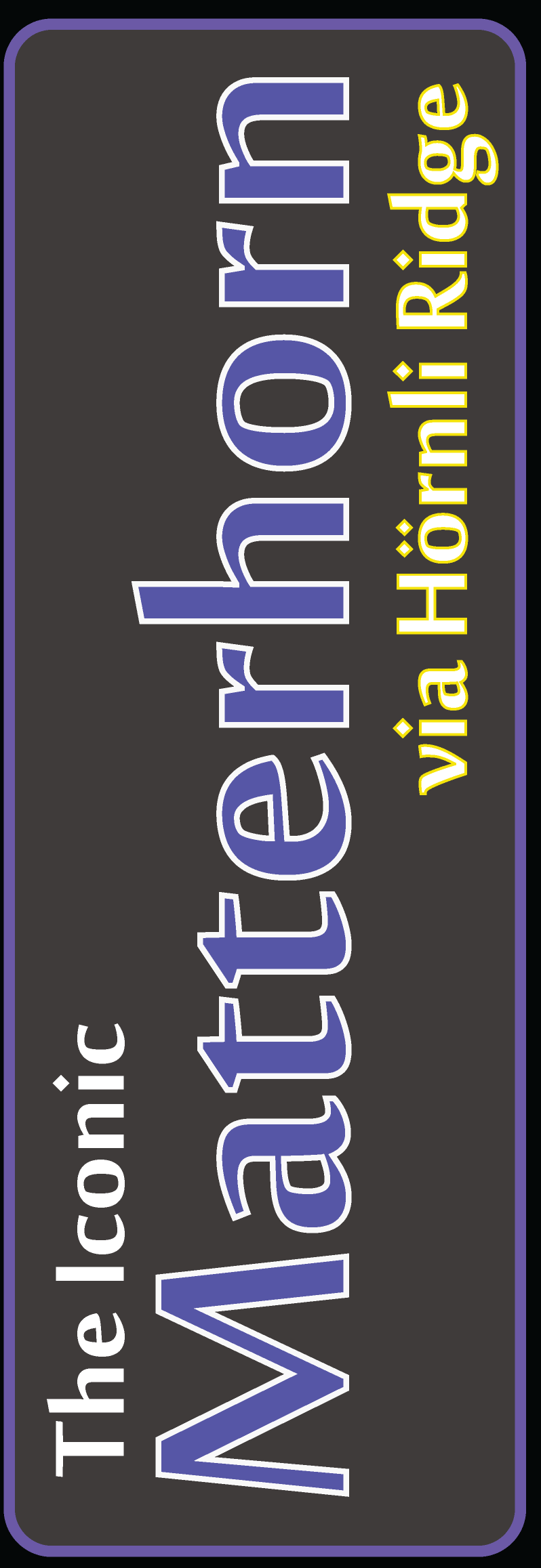
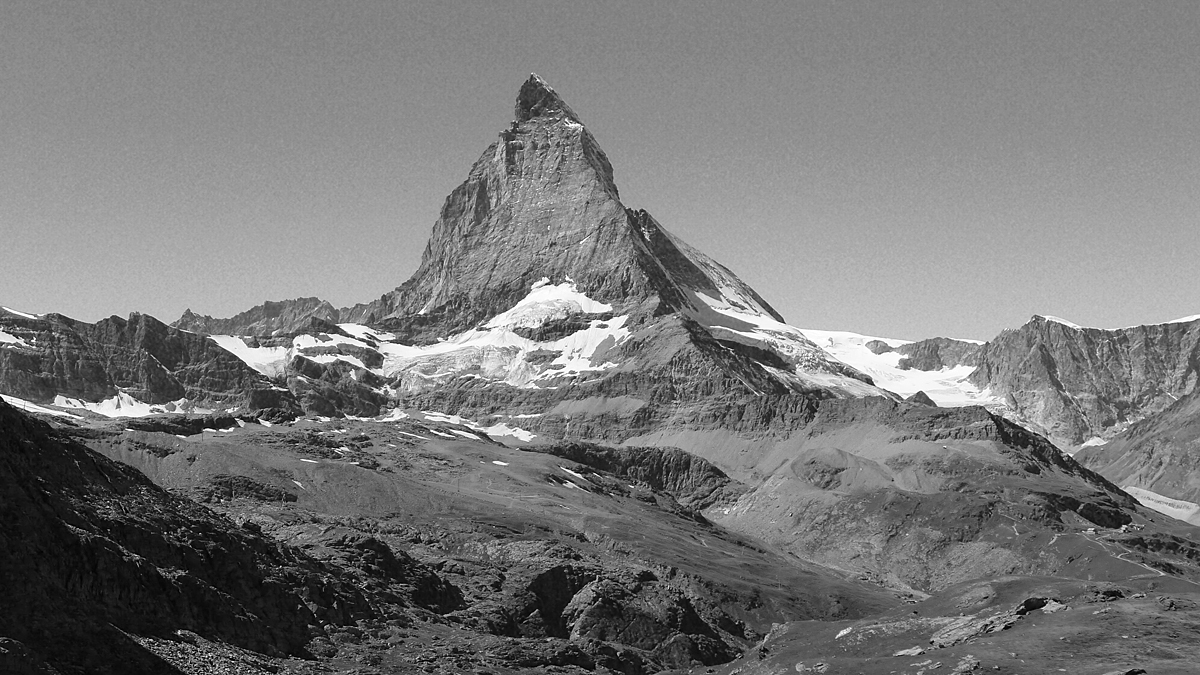




Squeezing in a climbing trip to the Alps when we fly across the Atlantic every other year to visit Dominic's family in Germany is becoming tradition. Certainly without such a highly compelling impetus we would not otherwise have the priviledge of frequenting this incredible (and incredibly pricey) mountain range in which alpinism is so firmly rooted. For this I feel lucky.
Our first two visits to the Alps taught us that the best laid plans often result in disappointment. The mountain gods over there are a tempestuous bunch and foul weather seems to be more the norm than the exception. In 2009 a surprise electrical storm found us frantically bailing from the buzzing knife-edged summit ridge of Zinalrothorn at 7:30 in the morning. That day the ensuing August snowstorm deposited a foot of fresh on the Matterhorn, dashing our high hopes of making the summit on that trip. On our return in 2011 all we could muster was an ascent of the comparatively "easy" Mönch and even that seemed kinda serious at the time. We were the sole guests at the usually popular Mönchsjochhutte that night and supposedly the first party in nearly two weeks to cut a track across the narrow, knife-edged snow ridge of the standard route after heavy early season snow. This time would be different. The plan was simply to not have one. We'd graciously accept any gifts the mountain gods decided to give, and there would be no disappointment.
In the days proceeding the trip we keep an anxious eye on weather predictions for Zermatt. Its surprisingly difficult to decipher internet forecasts and how they translate into mountain climbing, but it appears that some sort of window that coincides with our planned arrival in Zermatt may be opening! A call to the Hörnli Hut confirms our suspicions and our guts tell us that, without a doubt, the time to test our mettle on the most recognized peak in the Alps, arguably even the world, has come.
The Matterhorn's notoriety isn't entirely generated by its striking appearance but is unfortunately also fed by the peak's infamous tendency to claim the lives of its suitors. A total of more than 500 climbers have lost their lives here. Included in that list of unfortunate souls is Carolyn Randall, an accomplished and respected Colorado climber who died while her team of 3 tried to beat a hasty retreat in a lightning storm on her birthday in August 2008. While I didn't know Carolyn personally the news certainly struck close to home and left an impression on me as she was part of our rather close knit climbing community and we shared mutual acquaintances.
Our decision to make an attempt at the Matterhorn may appear rash and almost whimsical, but in fact that is far from the truth. Over the past four years the subject of whether or not it'd be wise to take on Hörnli Ridge, especially without a local guide, has been thoroughly discussed. Both of us have had serious apprehensions in the past, but somehow it just feels right now. Time to pounce.
I've often read comments about access being "easy" in the Alps but that's a relative term and to the extent that this statement is true, one certainly pays dearly for it. Our mission to the Hörnli Hut, the starting point for most Matterhorn summit bids, will involve planes, trains, automobiles and then some. It begins with a nine hour flight from Denver to Frankfurt where we're retrieved by Dominic's family and taken to his hometown on the western edge of Germany.
Three days later the journey continues with a 6 and 1/2 hour drive to, and nearly fully across, Switzerland which is facilitated by the cute little purple three banger Dominic's mother has very kindly lent us. Shortly before crossing the border we stop at a gas station to buy the Swiss Vignette, a $40 windshield sticker that grants us the priviledge of using Swiss roadways. The eerie train that whisks our car through a dark 12 miles of serious mountain between Kandersteg and Goppenstein is however not included in that fee and costs an extra $30 each way.
We park the car at the train station in Visp, pack enough supplies to survive an unknown five day itinerary in Zermatt into our backpacks and one duffel, and board the first train to the essentially carless city. Its hot and as we plug along the cog railway deeper into the steep and rugged Mattervispa valley our spirits are warmed by encouraging glimpses of the high peaks; they look to be in great condition. More than an hour later we arrive in Zermatt, cram what we need for an attempt at the Matterhorn the following day into our backpacks, and leave the remainder of our belongings in a locker at the train station.
Hiking on asphalt through town dressed and equipped for a serious alpine climb feels odd but we're far from alone. Ice axes are everyday accessories around here. We casually make our way to the Matterhorn Express lift on the far side, stopping at Wilde Hilde along the way to enjoy a simple but excellent lunch of half chickens and fries for the bargain price of only $35. From here we could theoretically climb the entire 5,400 feet to the Hörnli Hut; there is a perfectly good trail. But its mid afternoon, we've already had a fairly long day just getting here, and it'd be nice to make dinner at the hut with some time to spare. Like they say, when in Rome... $70 later we're on the Matterhorn Lift. While it seems like an exorbitant price to pay for 3,100 vertical feet its a drop in the bucket compared to what its taken to get here. Might as well maximize our enjoyment.
We exit the lift at the Schwarzsee station. The approach to the approach is now over. All that stands between us and the hut is a simple hike with 2,300 feet of elevation gain.
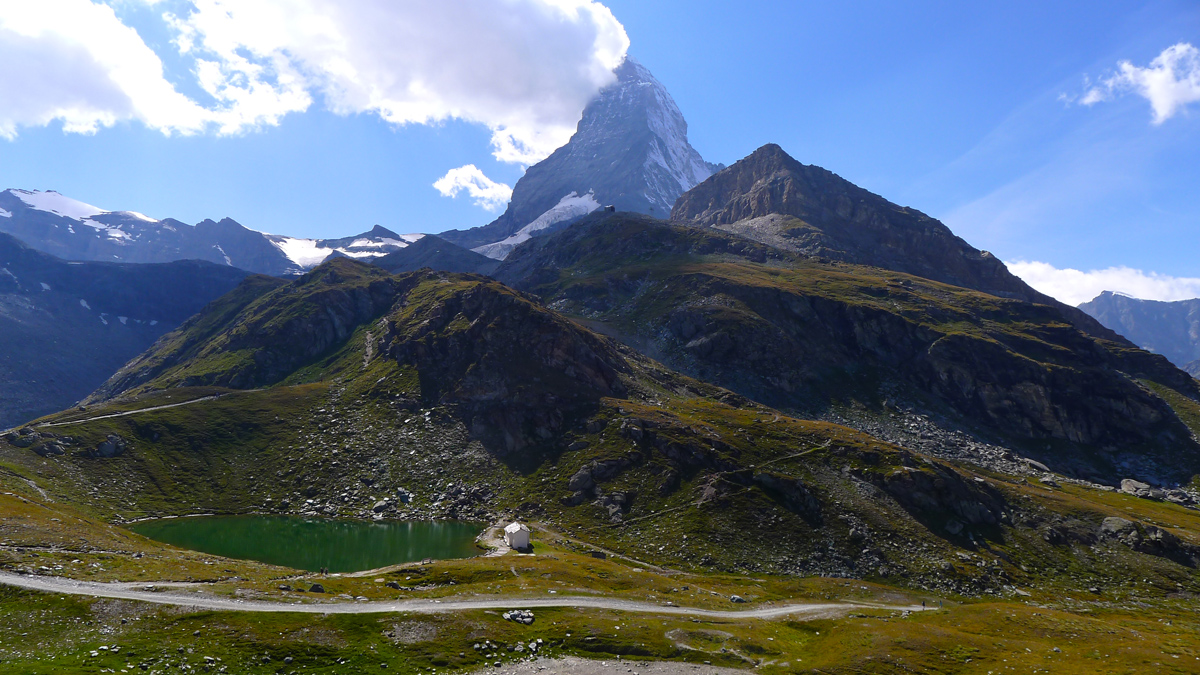
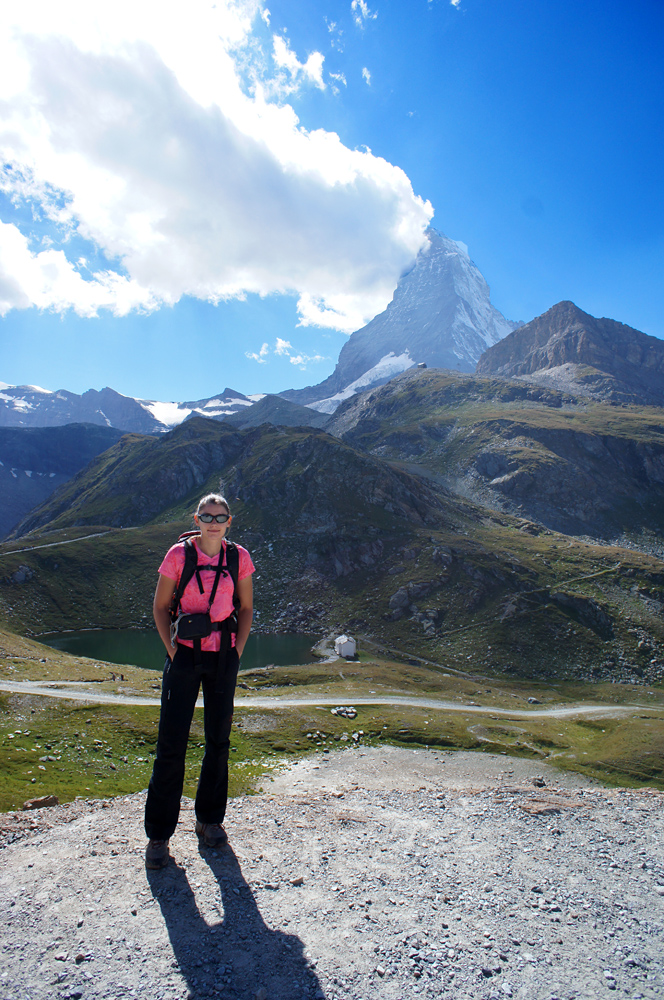
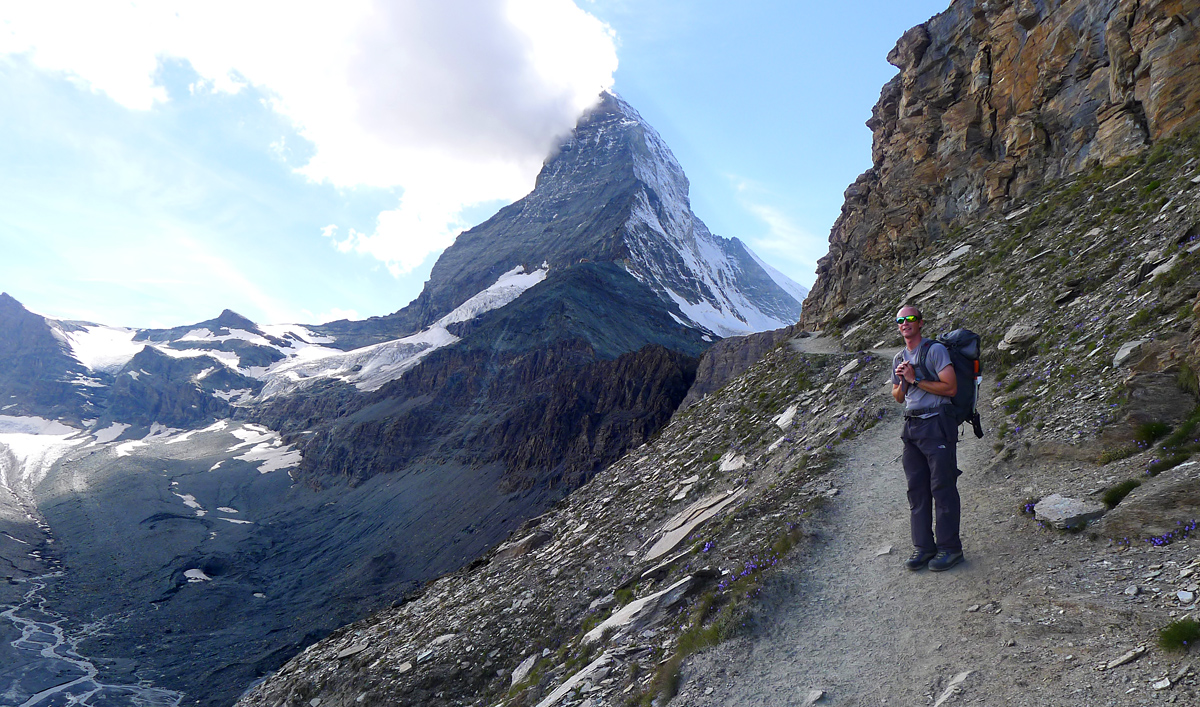
The Hut system of Switzerland is both a curse and a blessing at the same time. Traveling with nothing more than a daypack is obviously convenient. Having a real meal can be nice. Being able to buy a cold beer at "camp" is cool even if it does cost $6. Sleeping in very close proximity to a bunch of strangers, however, is wierd and that mixed with the anticipation of an upcoming climb makes it nearly impossible to get much more than an occasional nap. Wake up times are carved in stone and serve as starting guns for the race to the top. I also find the huts intimidating because there are rigid rules and routines that I'm not fully aware of and they seem to differ from hut to hut. Where can you wear your boots and where not? Where do you store your belongings? Will they give you warm tea in the morning if you hand in your water bottle the night before? Will it cost extra? Oh yeah, and plan on paying around $5 for every liter of drinking water you need unless you carry it all with you from town! Camping is a less popular option in the Alps, and at least in some areas it is even looked down on. Fine by us; lugging even more gear all the way to Zermatt is not an attractive proposition.
Of the five huts we've now overnighted at, our experience at the Hörnli Hut turns out to be by far the worst. From the moment we step inside we can feel the anxious nervousness in the air. Game faces are on. Climbers are sizing each other up. Guides are looking with disgust at the independent climbers who will potentially interfere with their well orchestrated flow in the morning. The substandard, unguided species are the minority and tend to flock together.
The woman who checks us in is cold and more or less tells me I'm an idiot for not bringing my ID to the mountain. Hmmm... sorry lady, this dumb American's climbed over 1,000 mountains and never needed it before! Think you can cut me some slack? I remain quiet, smile dumbly, and luckily she doesn't kick my ass right out the door. After that rough welcome I start to feel a bit more comfortable as we befriend and chat with an Italian trio and then enjoy dinner with a pair of especially friendly Swiss gentlemen who speak perfect English and are fully willing to use it! Vielen Dank Werner und Alex!
After lying awake for hours on a horribly uncomfortable mattress the established wake up time of 4.30am finally arrives. A posted sign warns that beginning the climb before 4.50 is forbidden and we know its also not acceptable to leave the hut until all of the guided parties have started so we take our time eating the provided breakfast of coffee, bread and jam.
There are no teams bigger than two and traveling in a shortrope configuration from the start is the norm. Here the stronger climber goes first, tied in perhaps 20 feet ahead of the weaker climber, and uses both permanent and natural anchors to quickly belay the weaker climber up short, difficult sections. This technique allows for efficient travel over moderately technical terrain as it isn't necessary to ever establish a real anchor or to use a belay device. Shortroping is generally the way people climb in the Alps and after observing it in action on our first (guided) trip we began to incorporate it into our alpine repertoire, practicing it back home when fitting. Some of the peaks in Wyoming's Wind River Range have lended themselves well to this mode of travel. Also, our winter ascent of Capitol Peak comes to mind.
We choose to hold off on roping up until we see what we're up against and set off through the dark toward the line of headlamps marking the inital 100 meters of the route. The ridge begins with a very steep little step and climbers congregate at the base for their turn at the first series of fixed lines. When our turn comes I feel somewhat uncomfortable trying to half rock climb and half rope climb up the obstacle in my boots but there's no time to waste in hesitation as I am currenly the bottleneck of the route.
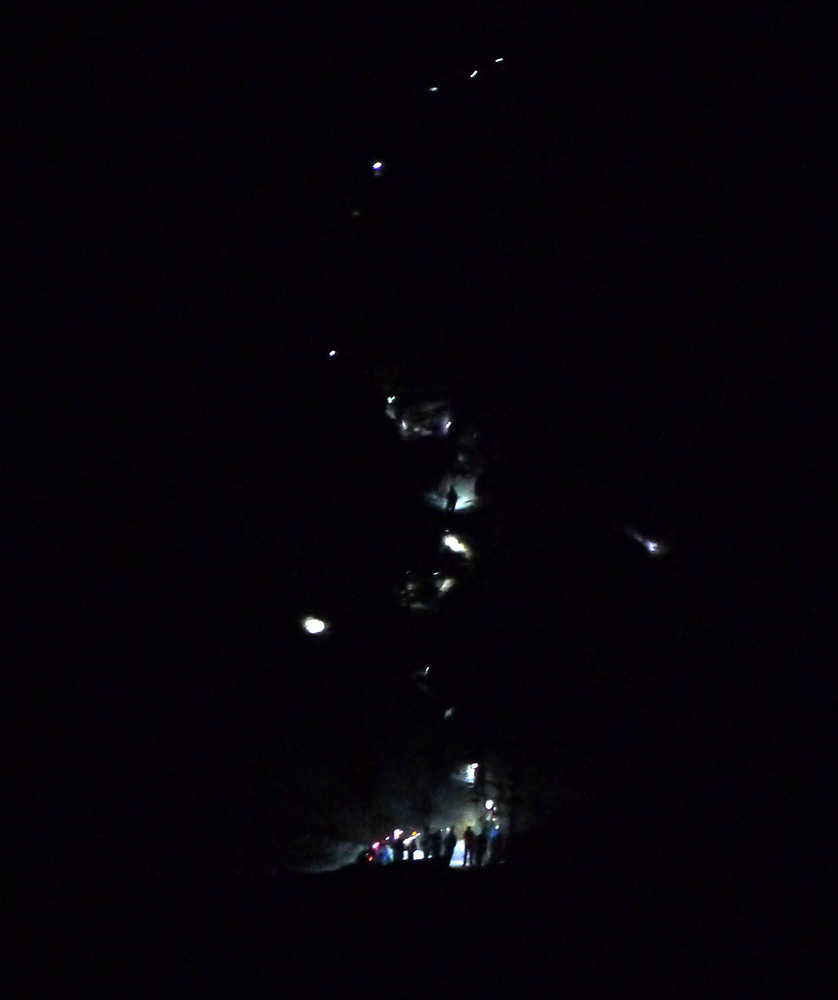
Above the initial headwall we scramble along in the dark, careful to stay on the meandering but heavily cleaned and crampon-clawed route. Routefinding on Hörnli Ridge is considered nontrivial by most but its easy enough to follow our noses even in the dark and we never stray far.
The guides know every move of this ridge by heart and are able to lead their clients along with incredible efficiency. For the most part they maintain their head start and we climb amongst other unguided duos. The scrambling is consistent and sustained between 3rd class and 5.2ish and the rock dry so we choose to remain unroped despite the fact that we're now the only ones opting to do so and stick out like a sore thumb. I'm a bit surprised by this, but our judgment tells us that for two competant climbers of similar abilitiy its safer to remain unroped here. One person falling would just mean the other person falling with them.
As the sky begins to lighten I am thoroughly enjoying the fun, thoughtful, and at times exciting movement over easy alpine rock. The views aren't bad either; the high peaks around us float above a blanket of clouds.
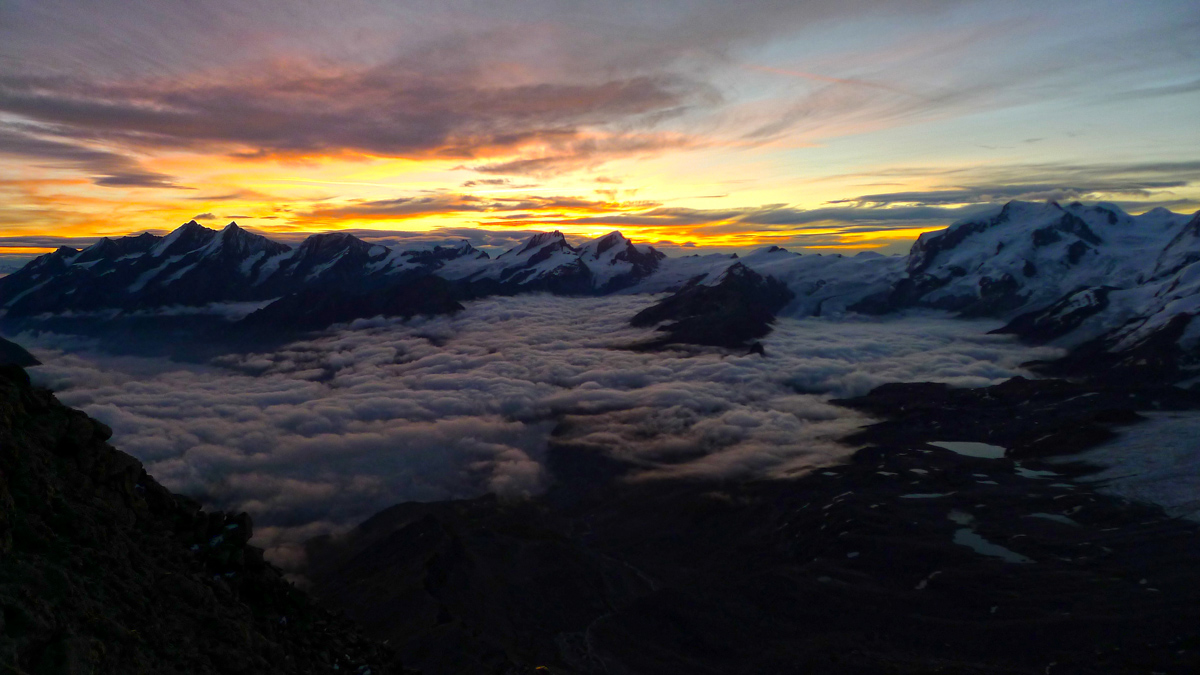
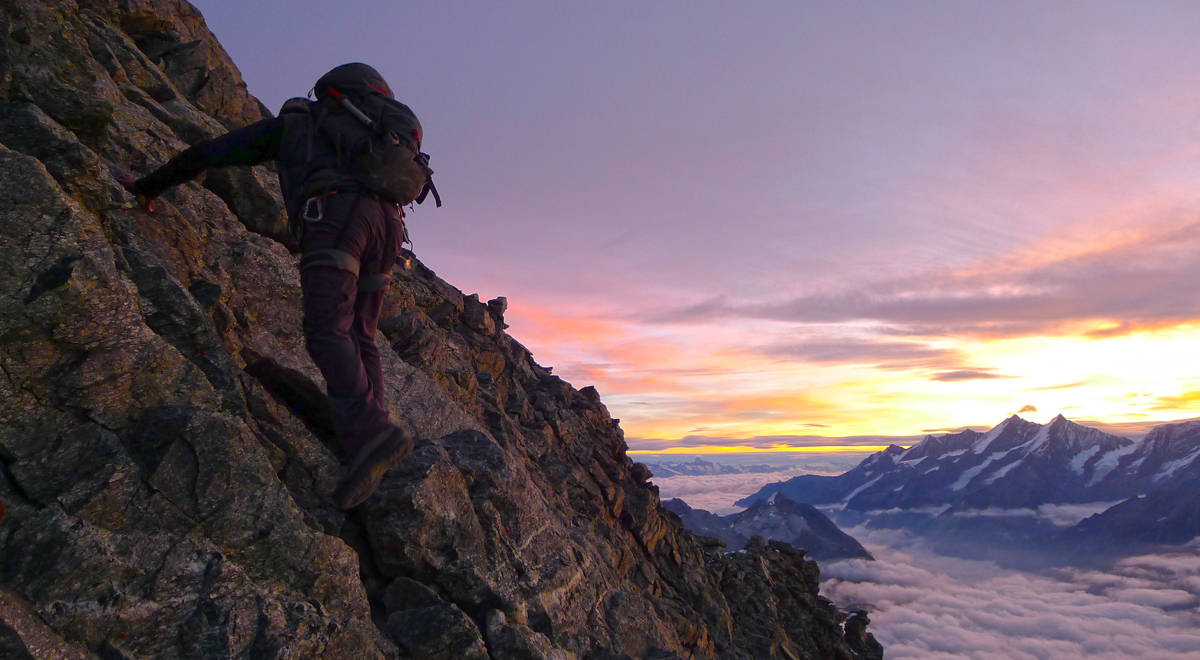
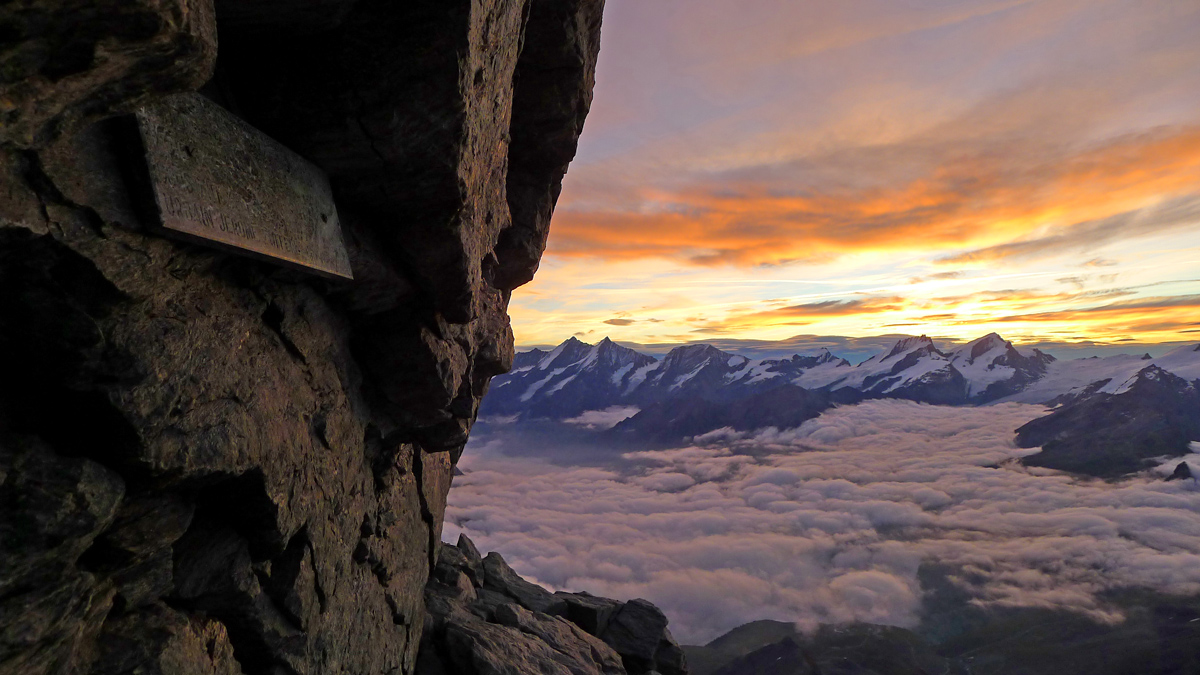
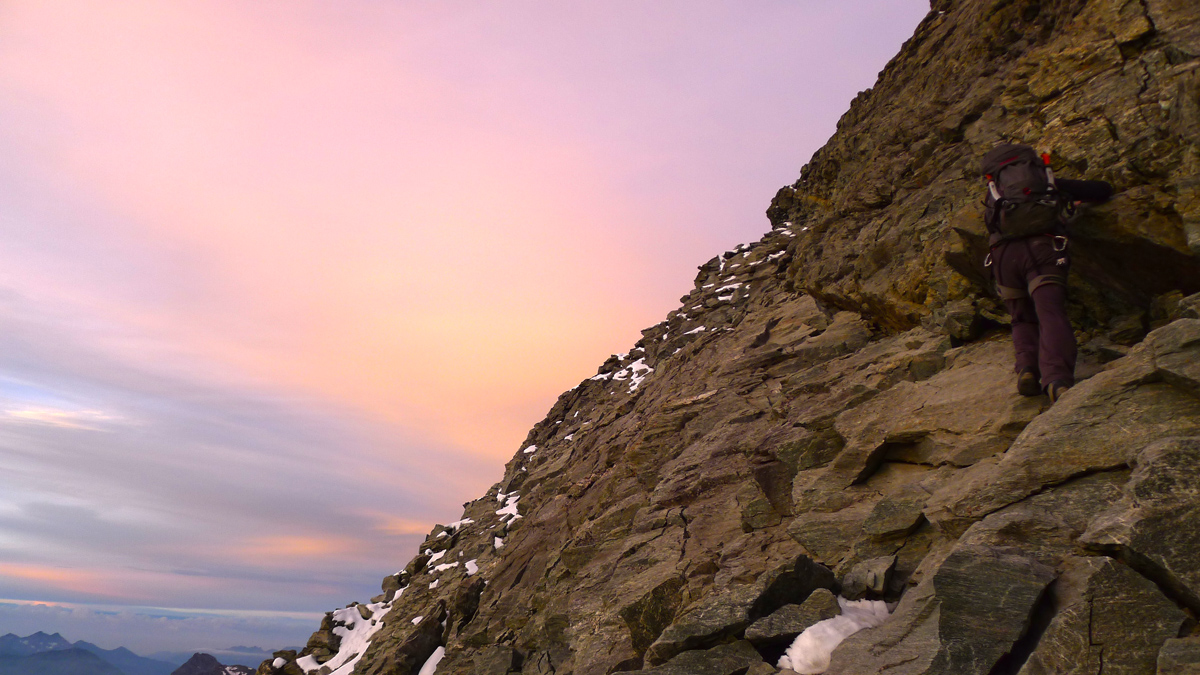

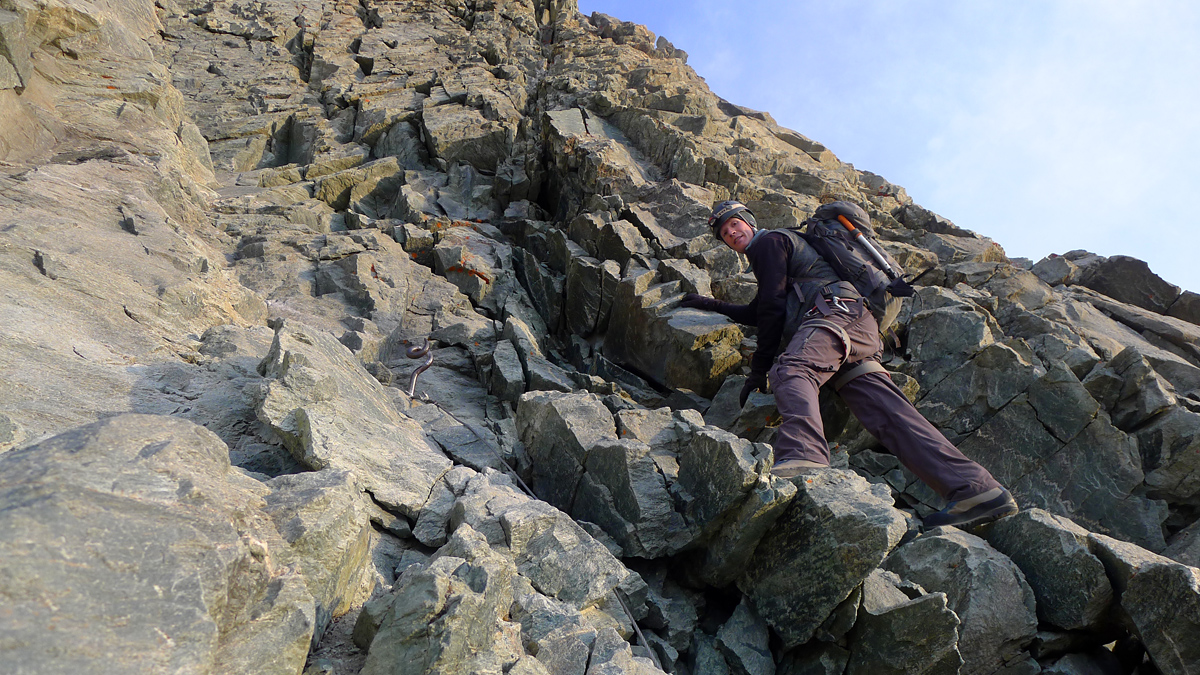
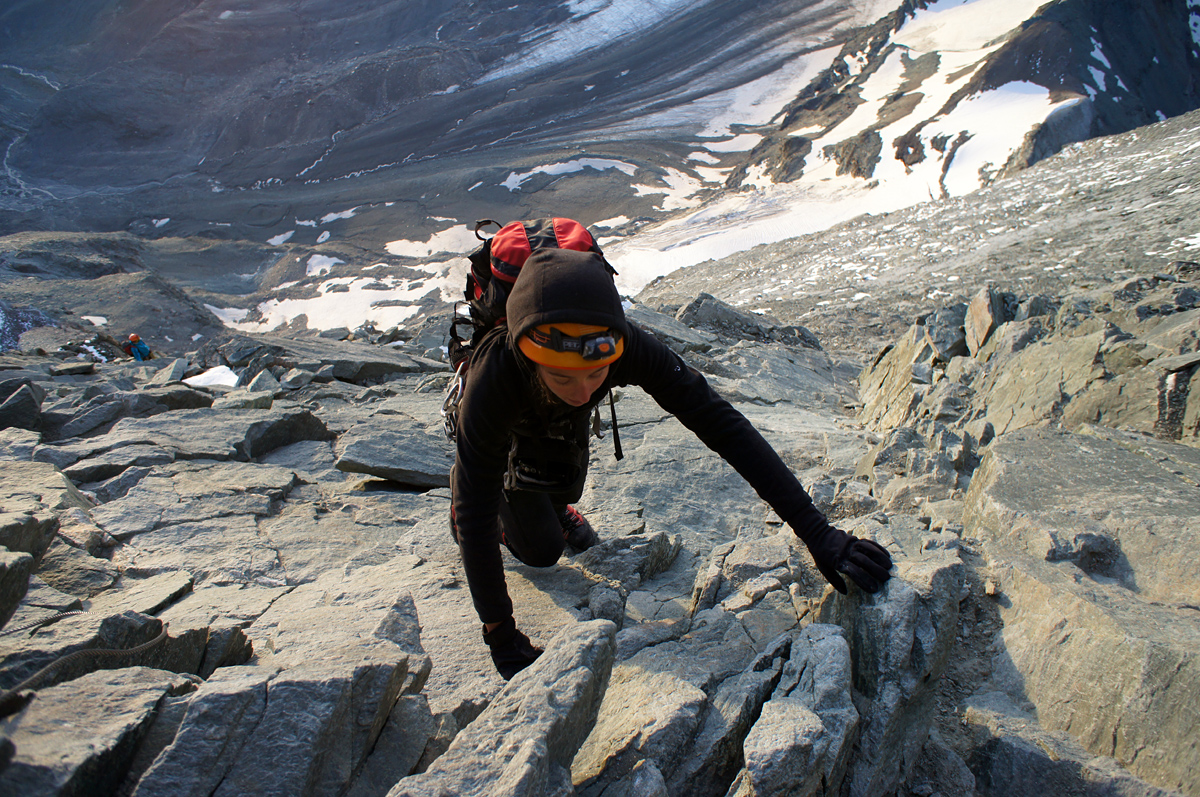
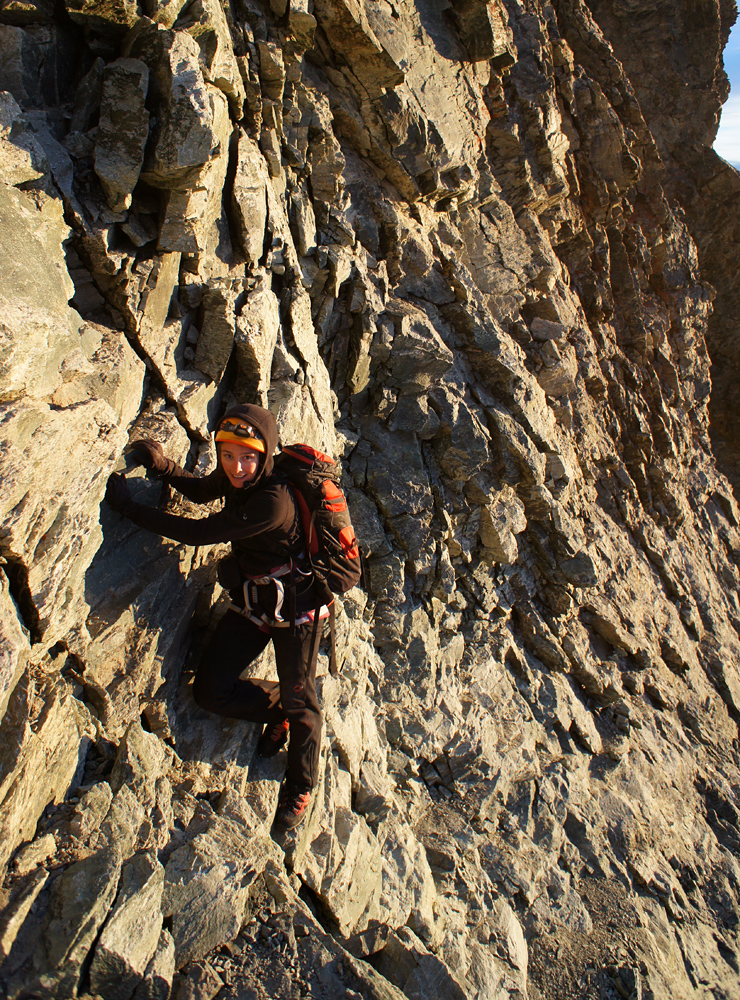
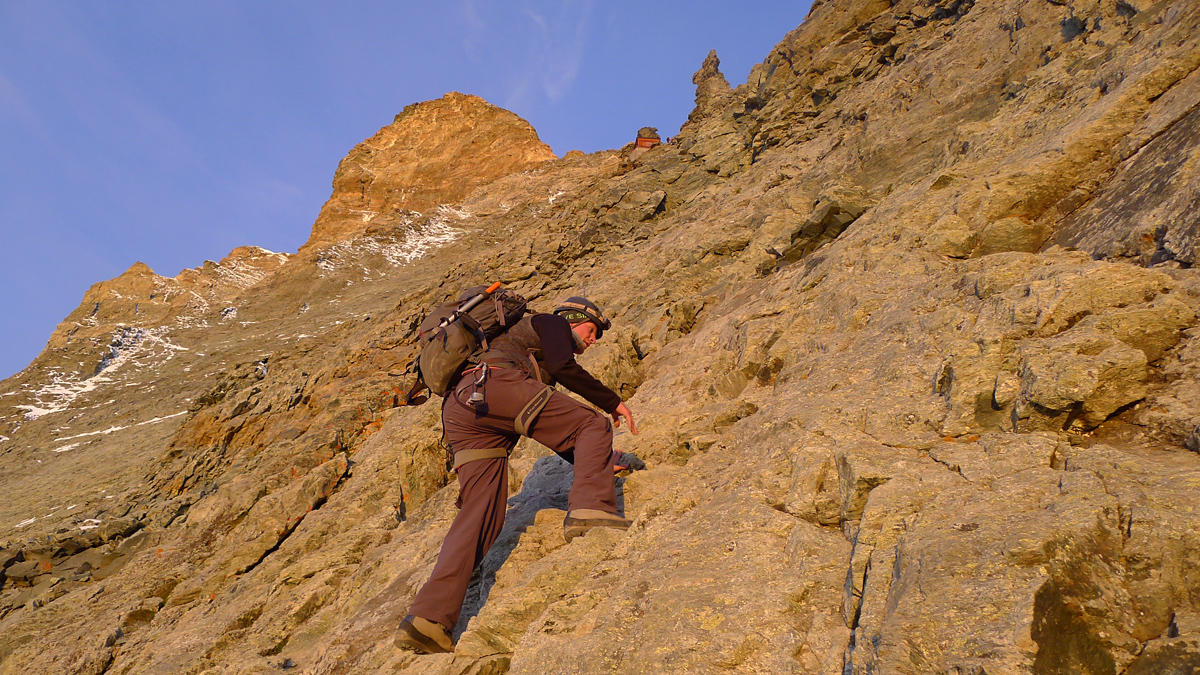
As the sun rises the Solvay Hut, a small emergency refuge at 13,130 feet, comes into view up above. Guarding it is the famous Moseley Slab, an especially difficult and slabby section of climbing. The required smearing in mountaineering boots flirts with my unroped comfort level but is perfectly manageable with a cool head.
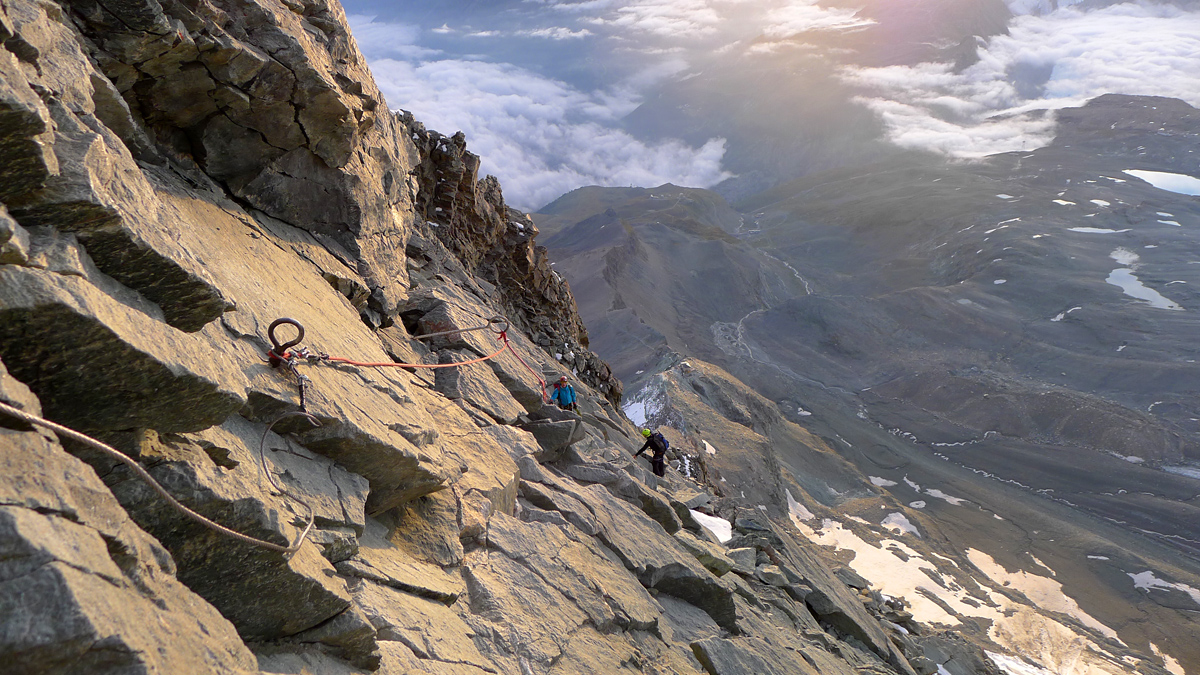
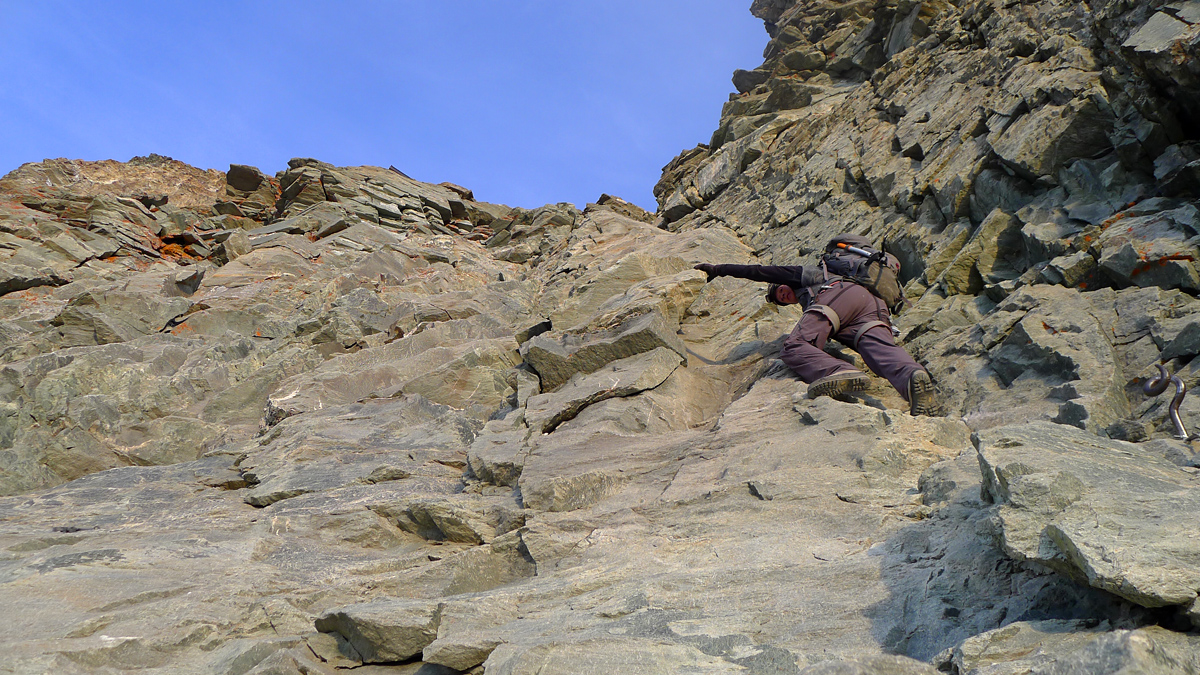
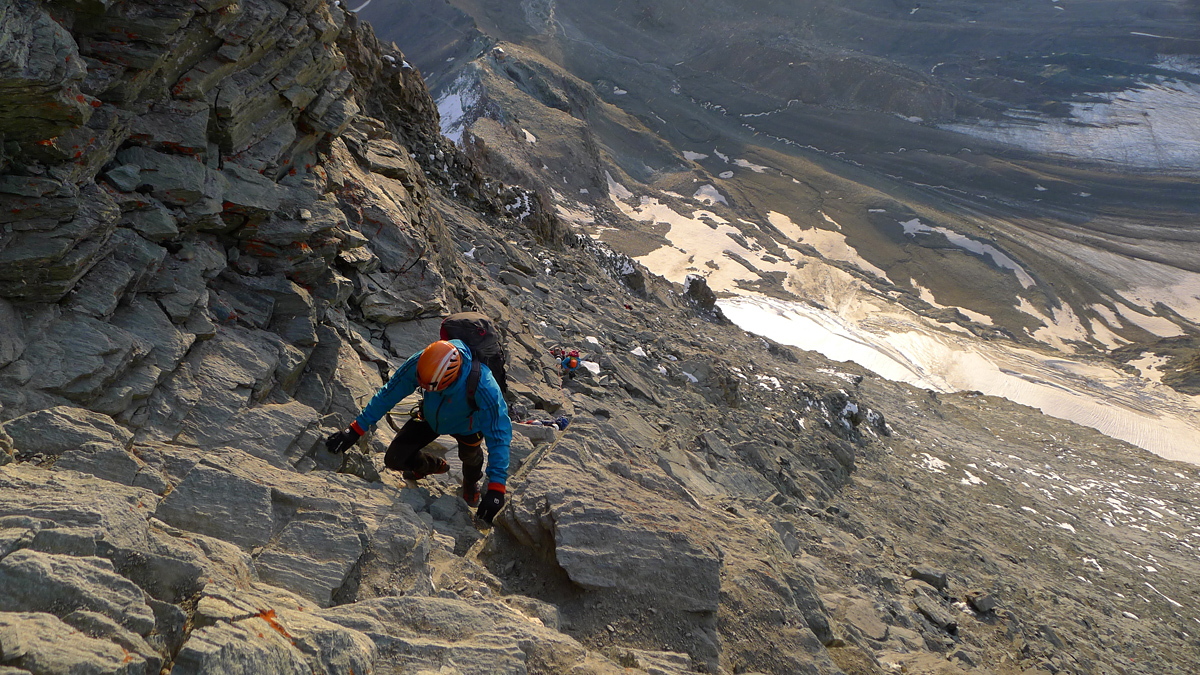
Fifth class rock gives way to a small sidewalk that must be used to sneak around the side of the little hut nestled in the rather narrow ridge crest. On the other side, with a little more than half of the ridge behind us, we take our first break of the day.
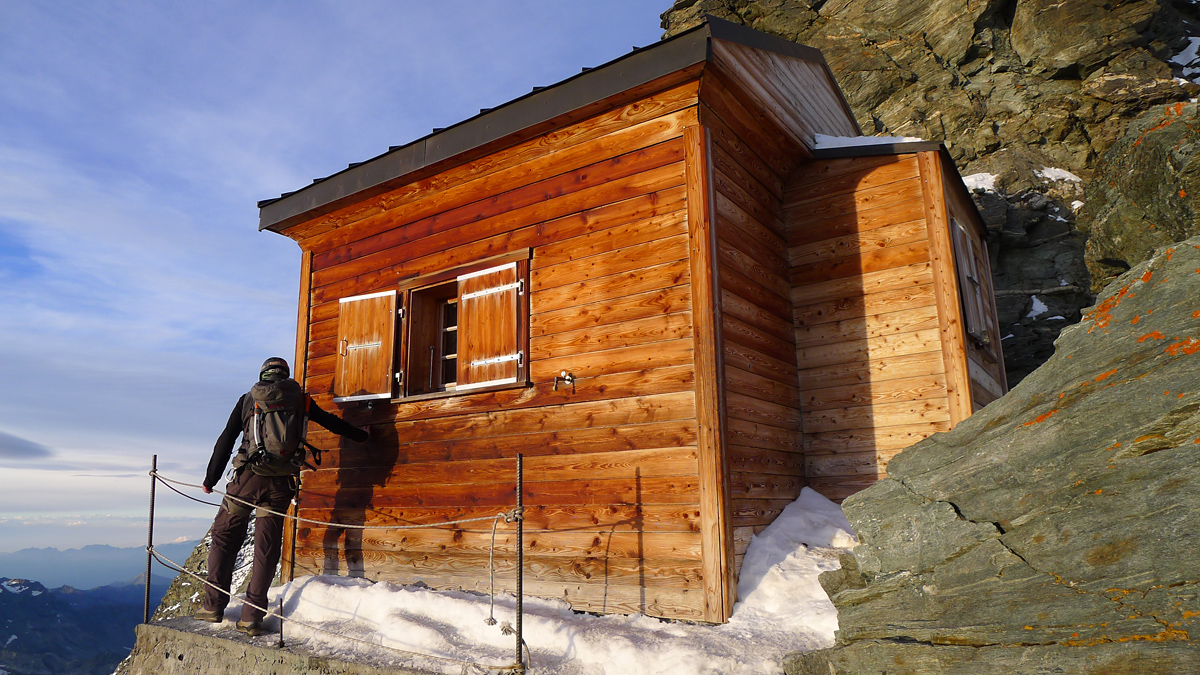
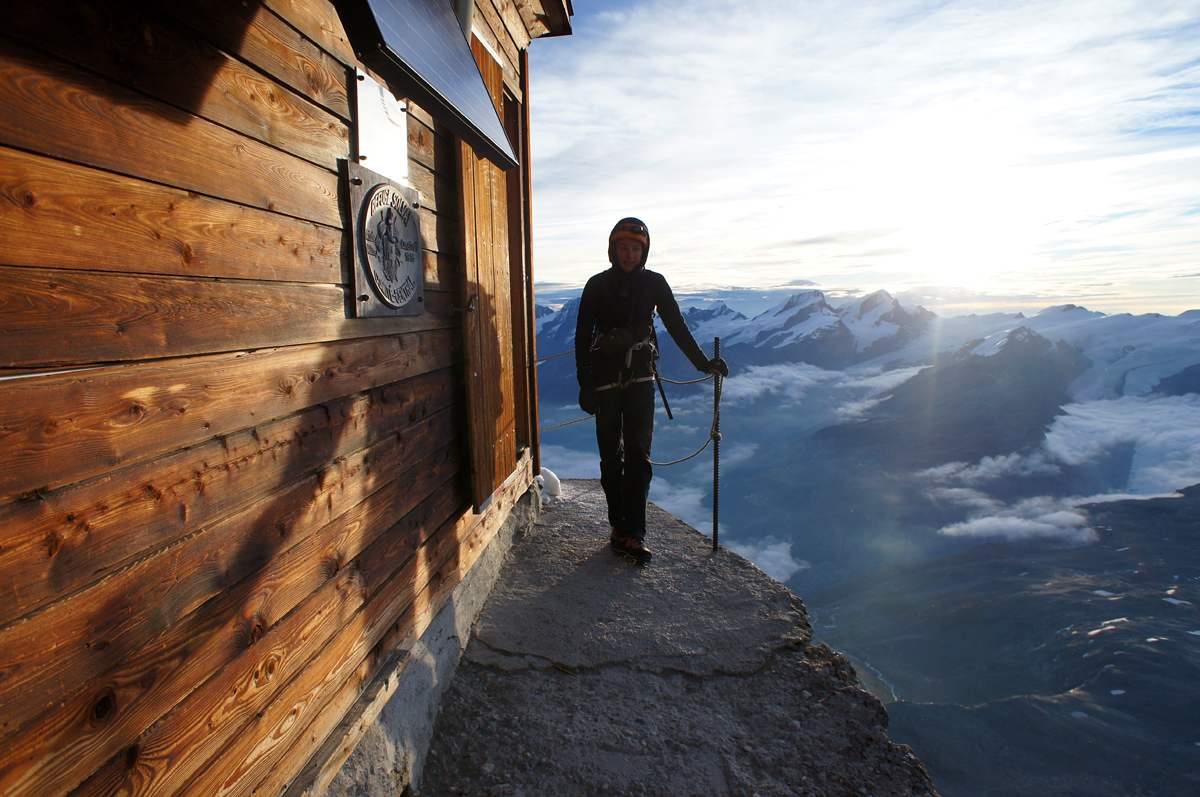
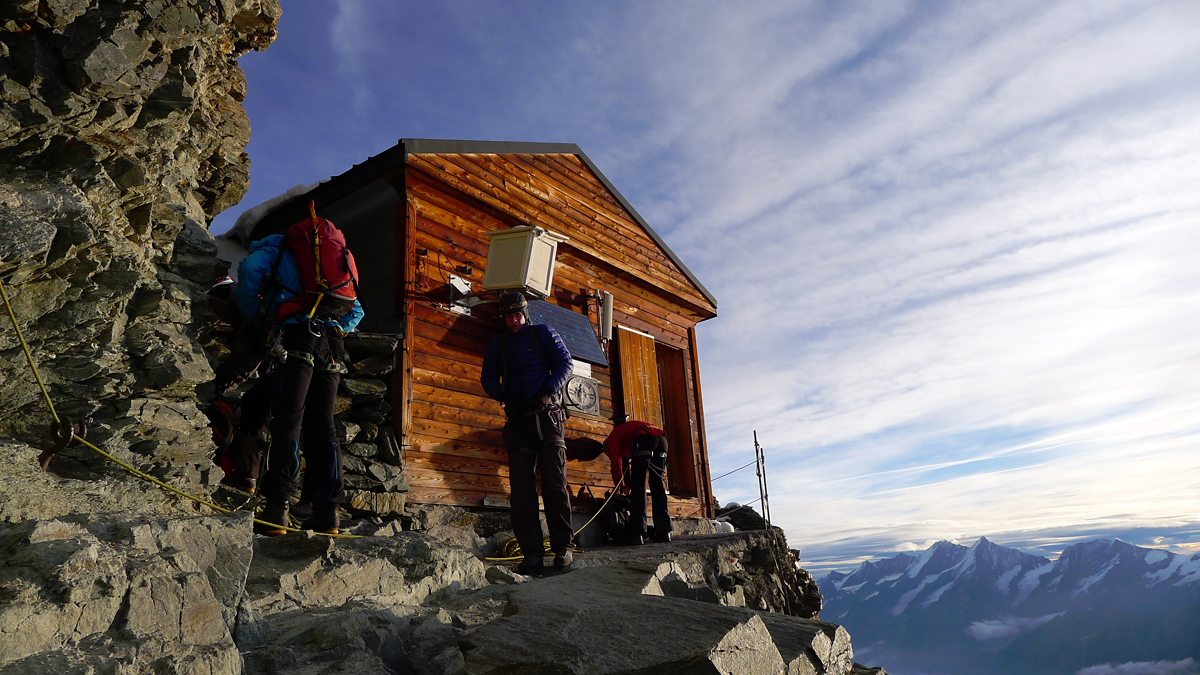
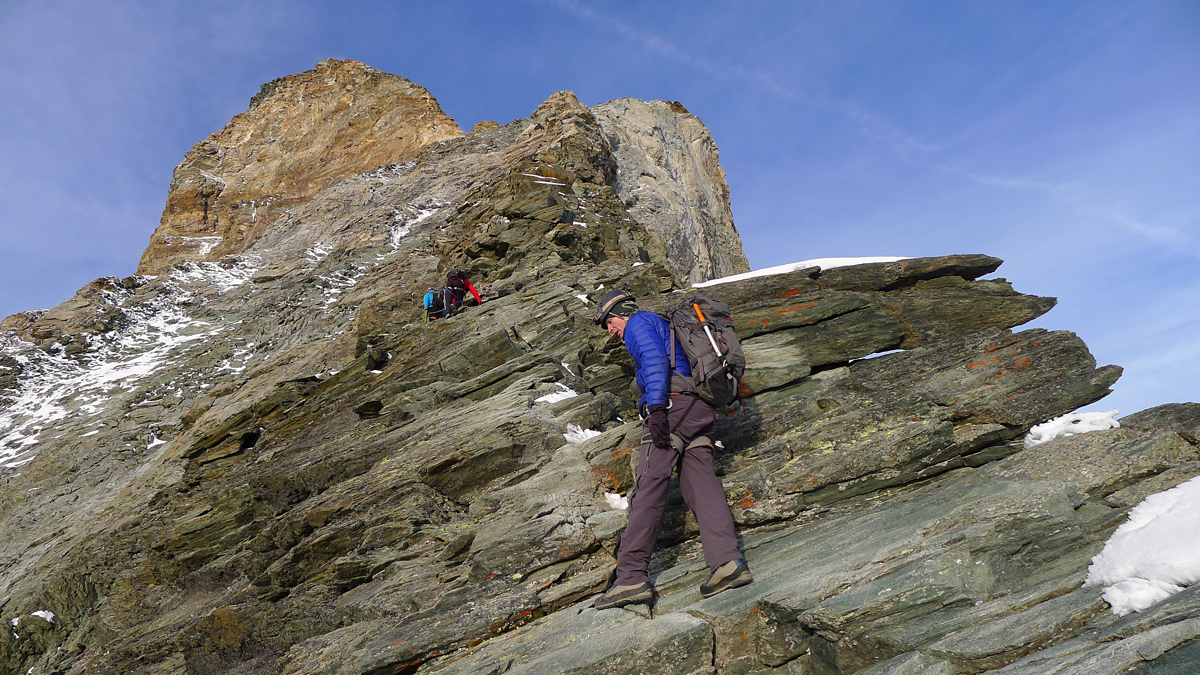
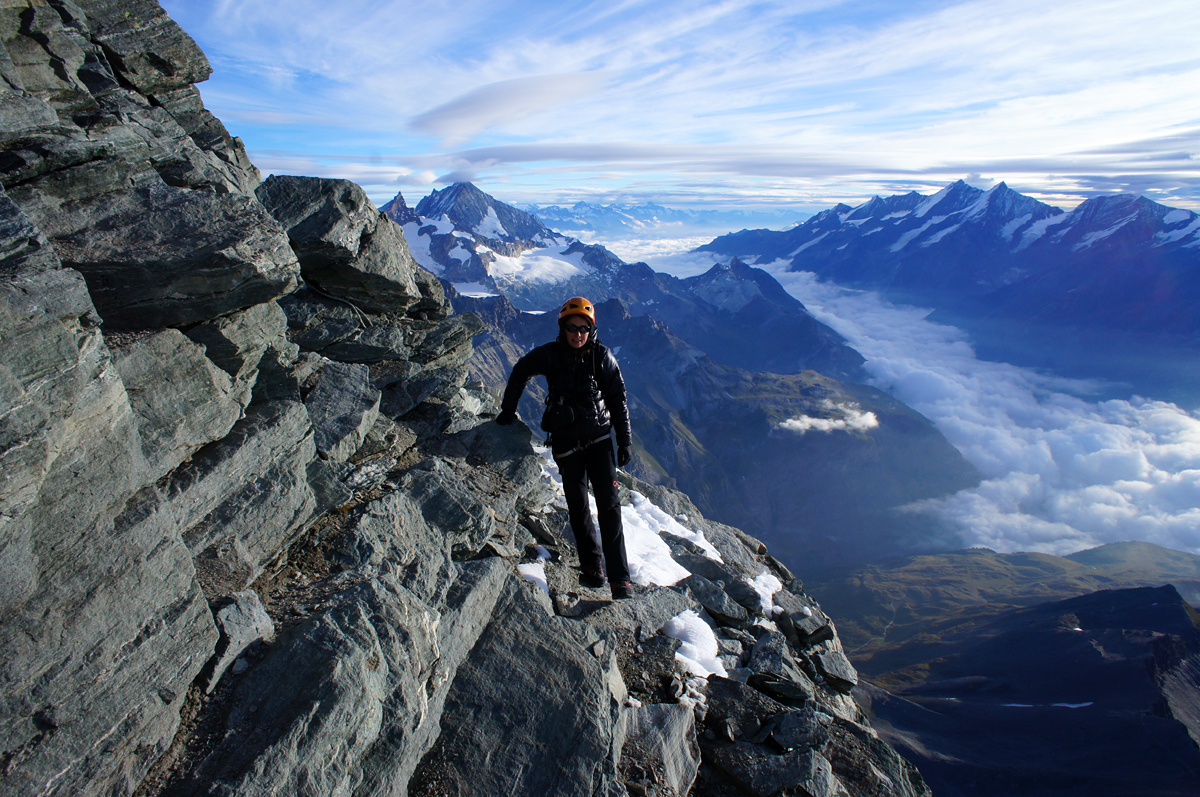
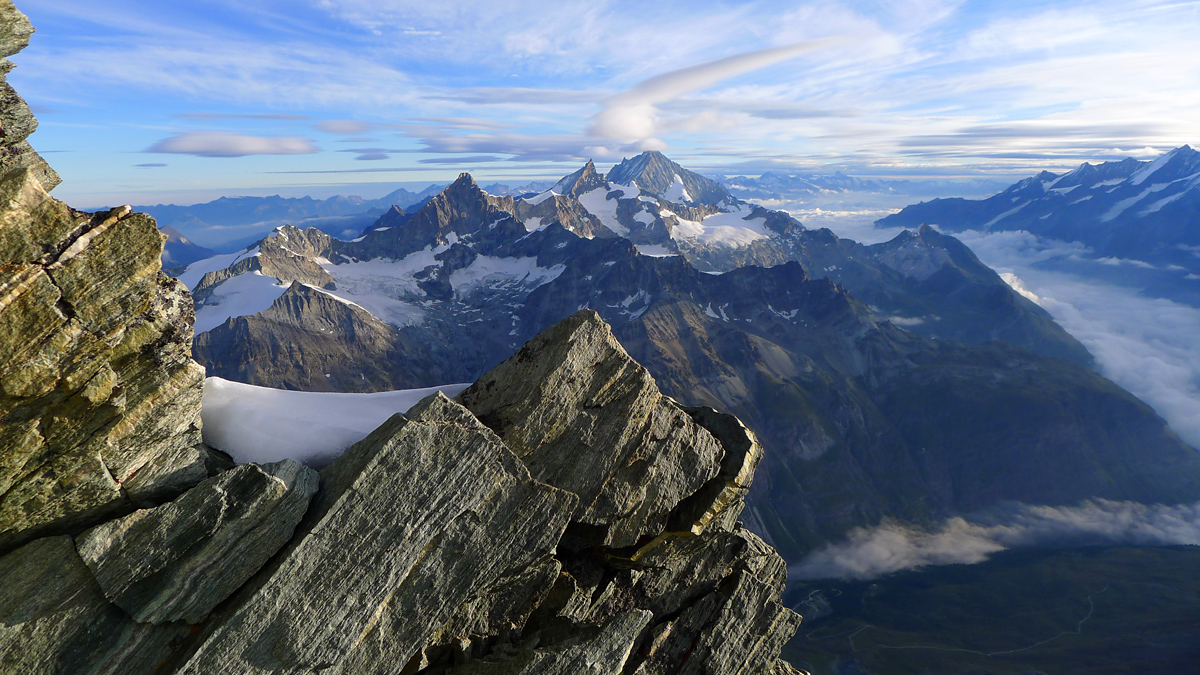
The upper section of Moseley Slab above the hut is even steeper and and slabbier but there are fixed ropes in place. By now I'm getting the hang of climbing these things and am quite comfortable batmanning up this one sans protection.
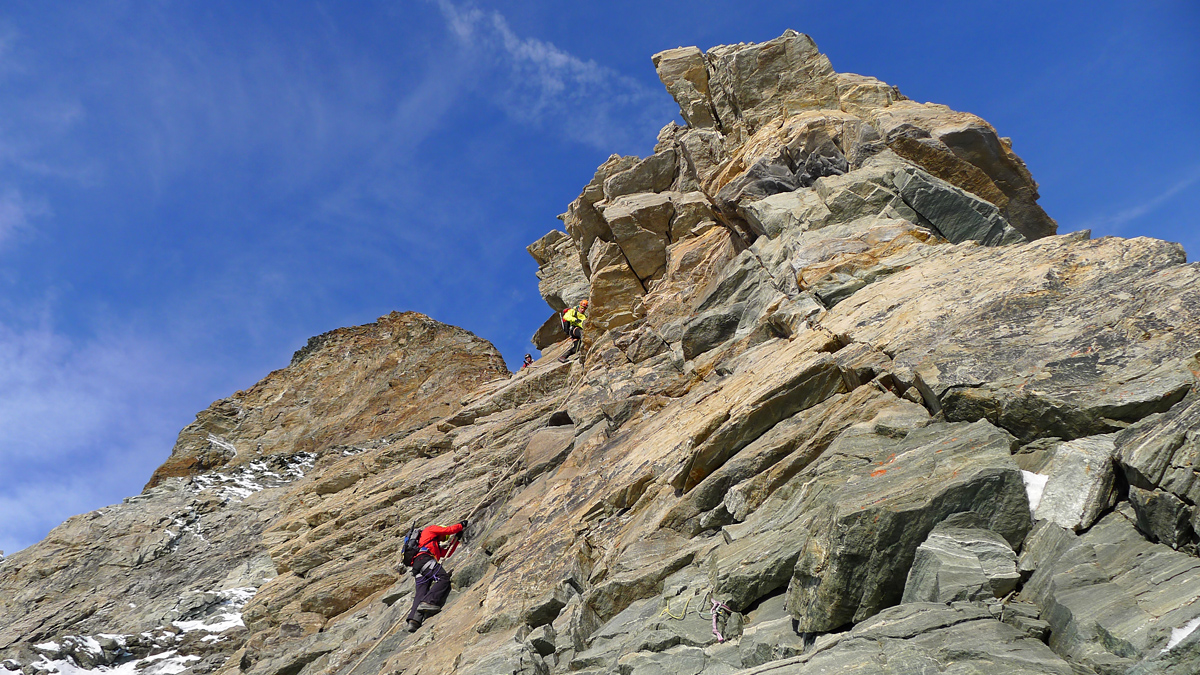
Above the slabs the ridge suddenly becomes snowy and convinces us into crampons. A flustered guide who has fallen behind the rest of the pack passes us by and queries "Sprechen Sie Deutsch?" When we nod he smartly asks in German how the hell we think we're going to get down. "Wir haben ein Seil!" counters Dominic defensively. Ah, the Matterhorn experience.
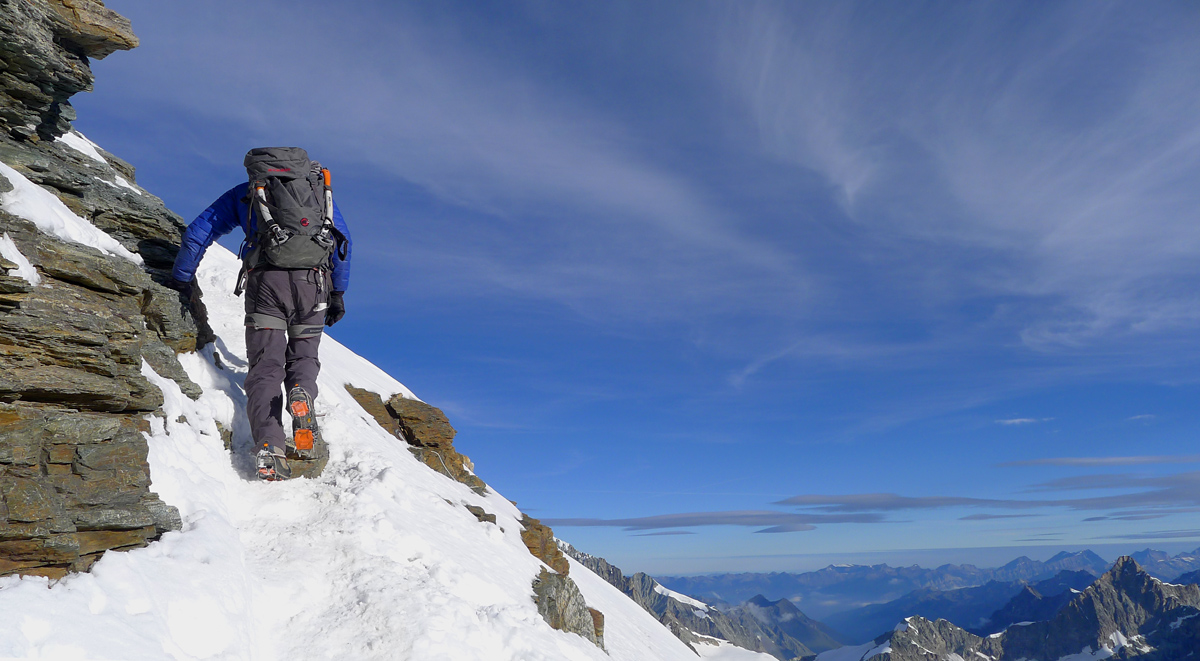
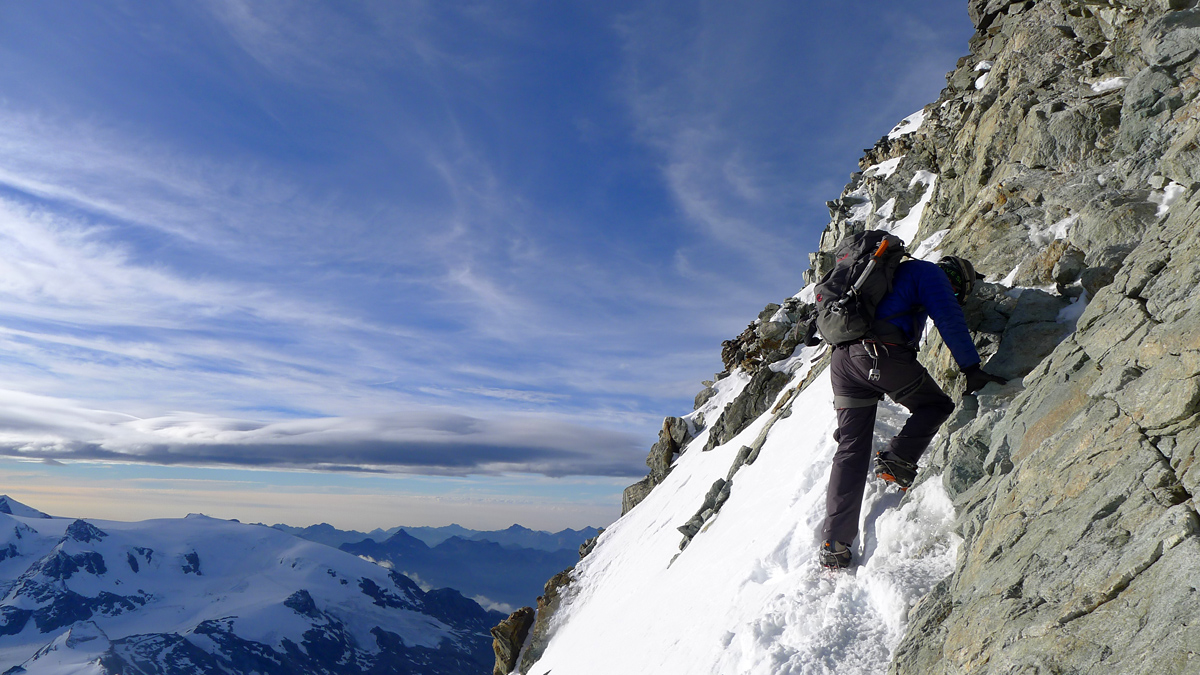
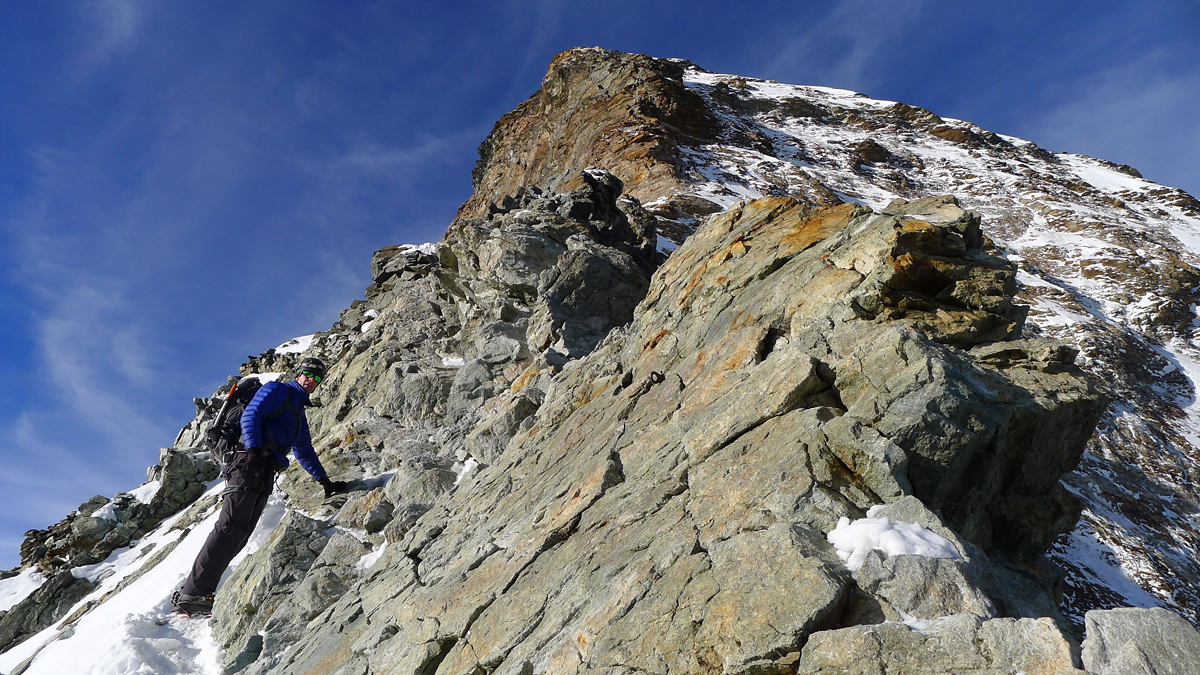
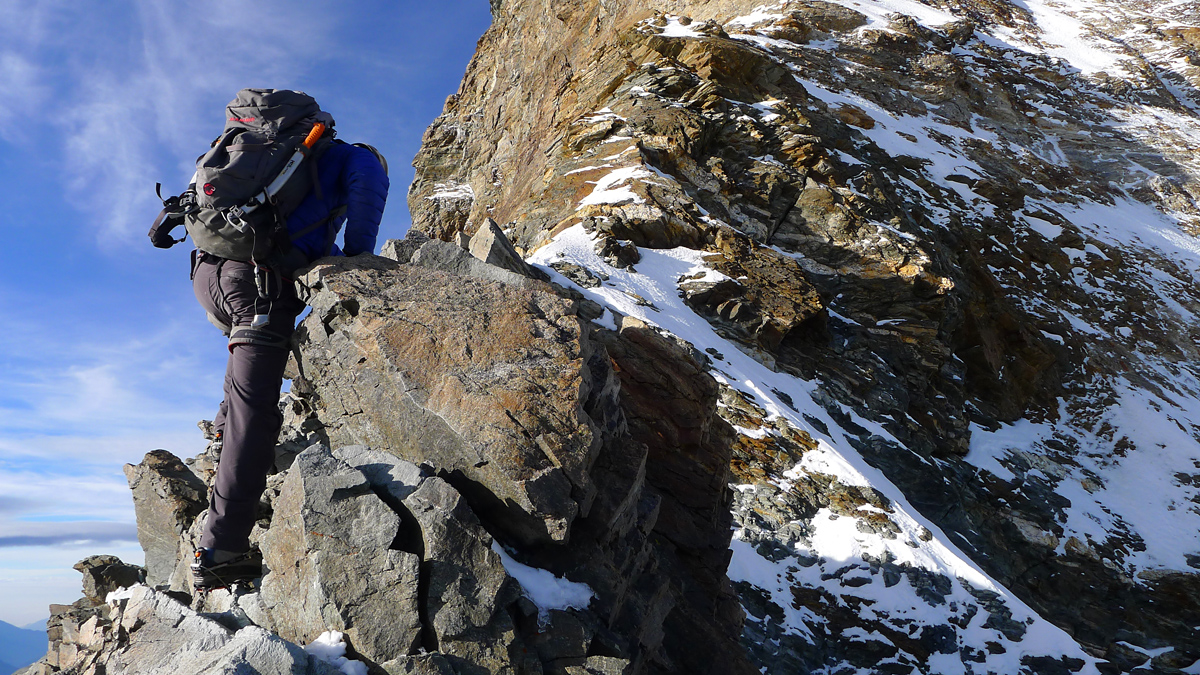
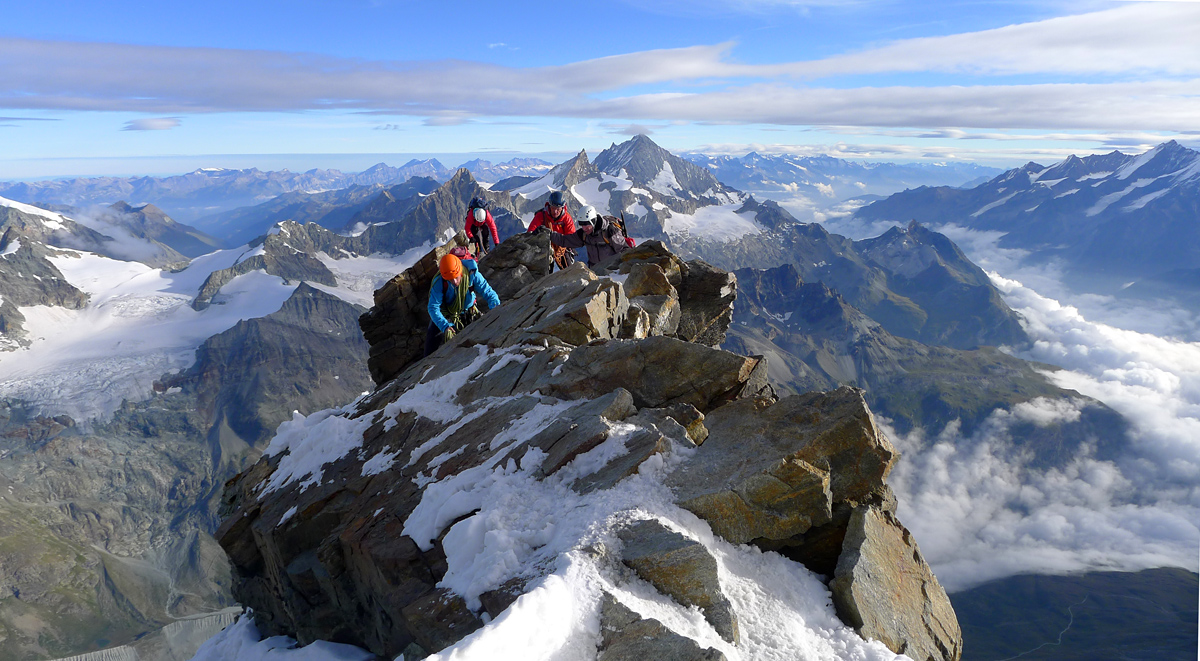
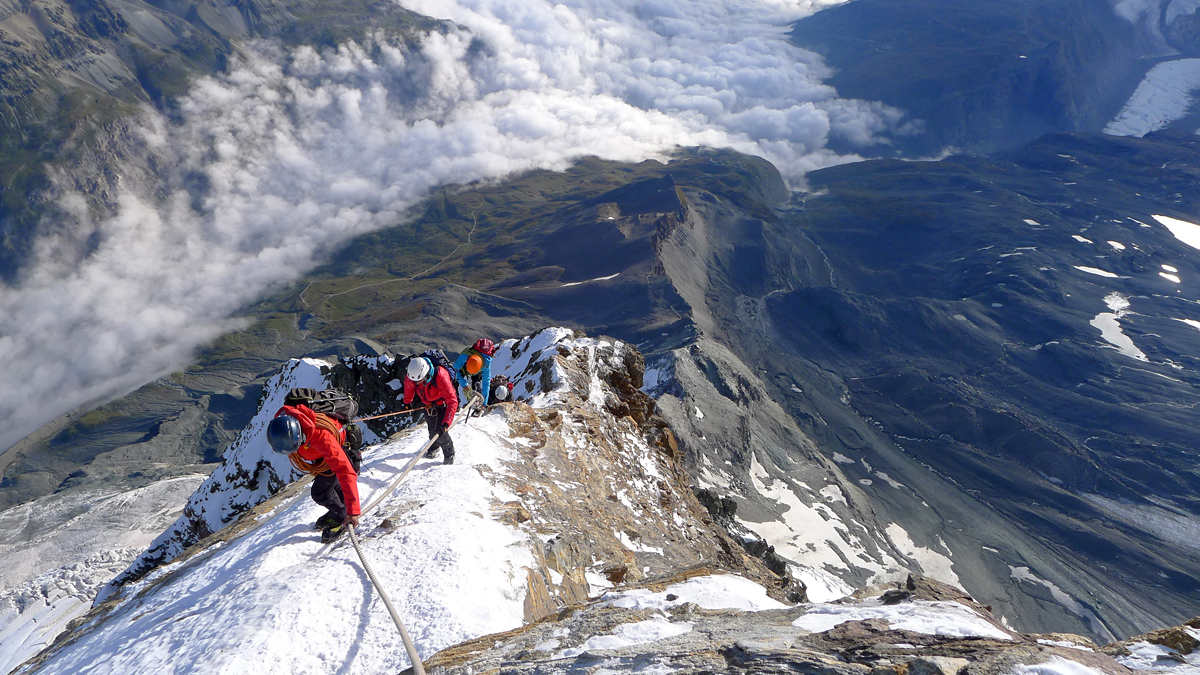
The last steep, snowy, exposed, and difficult 600 meters or so of the ridge appear much more serious so we join the rest of the shortrope parade. There are many fixed anchors and lines here and it takes us a try or two to adjust our rope length to match their span and ensure we have one solid anchor point at any given time. Most of these anchors are metal rods around which parties simply wrap their rope. There are parties immediately in front of and behind us but the weather is incredible and we're happy just going with the flow.
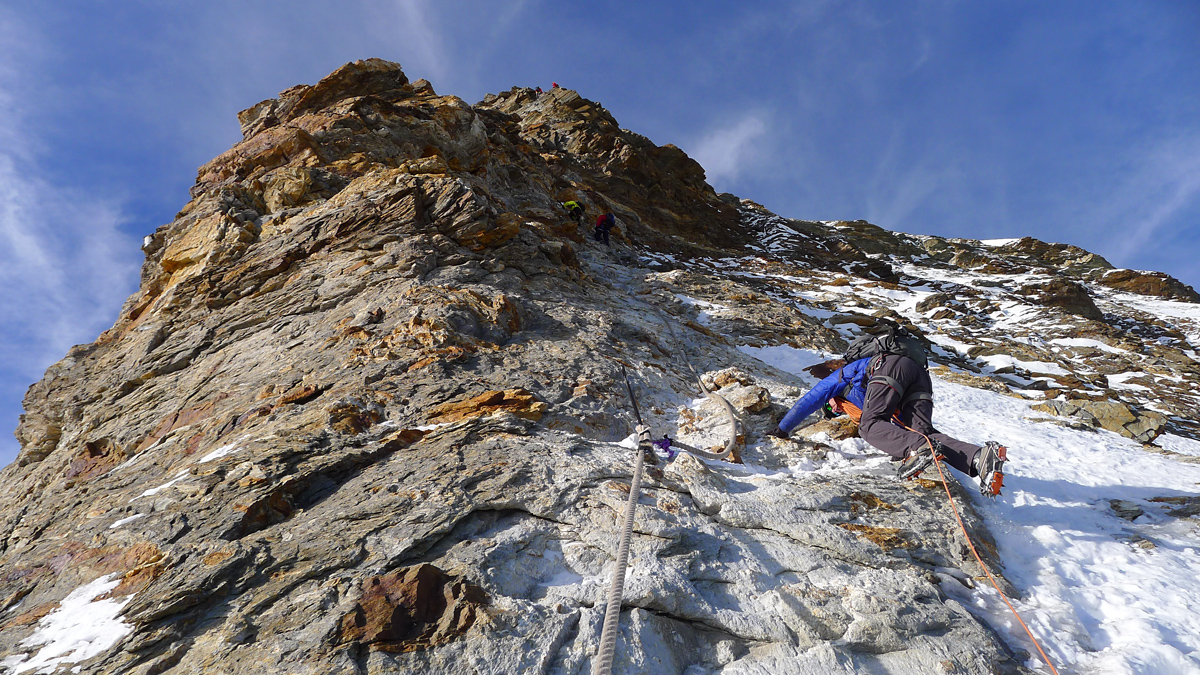
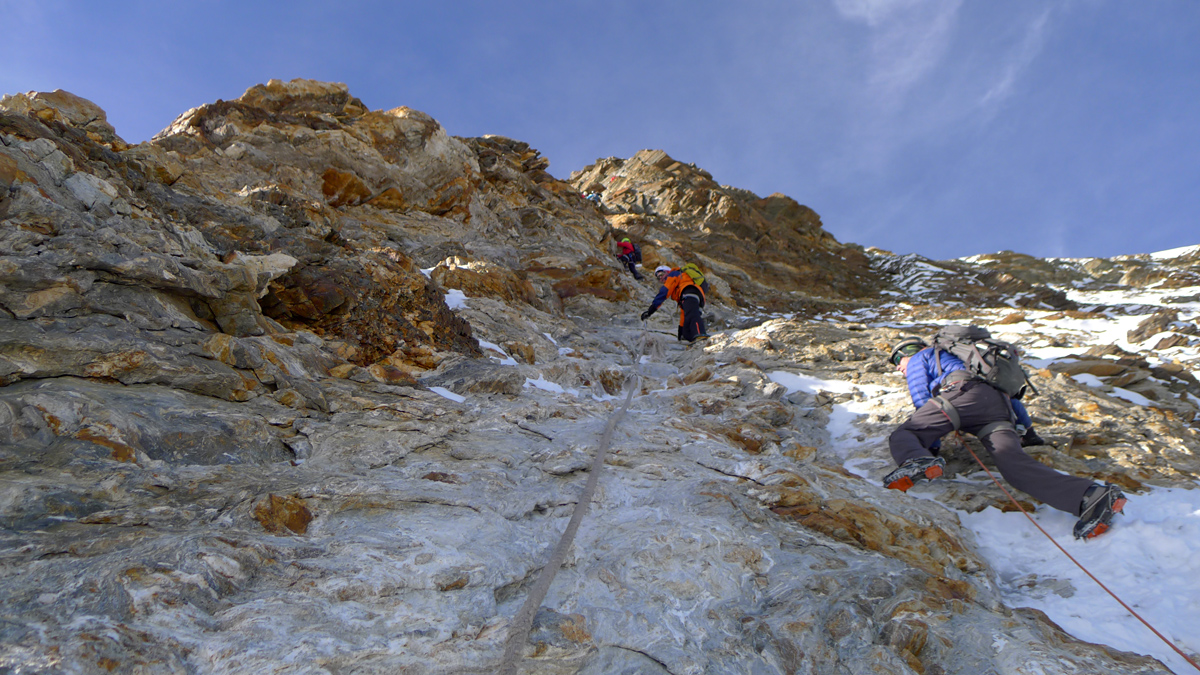
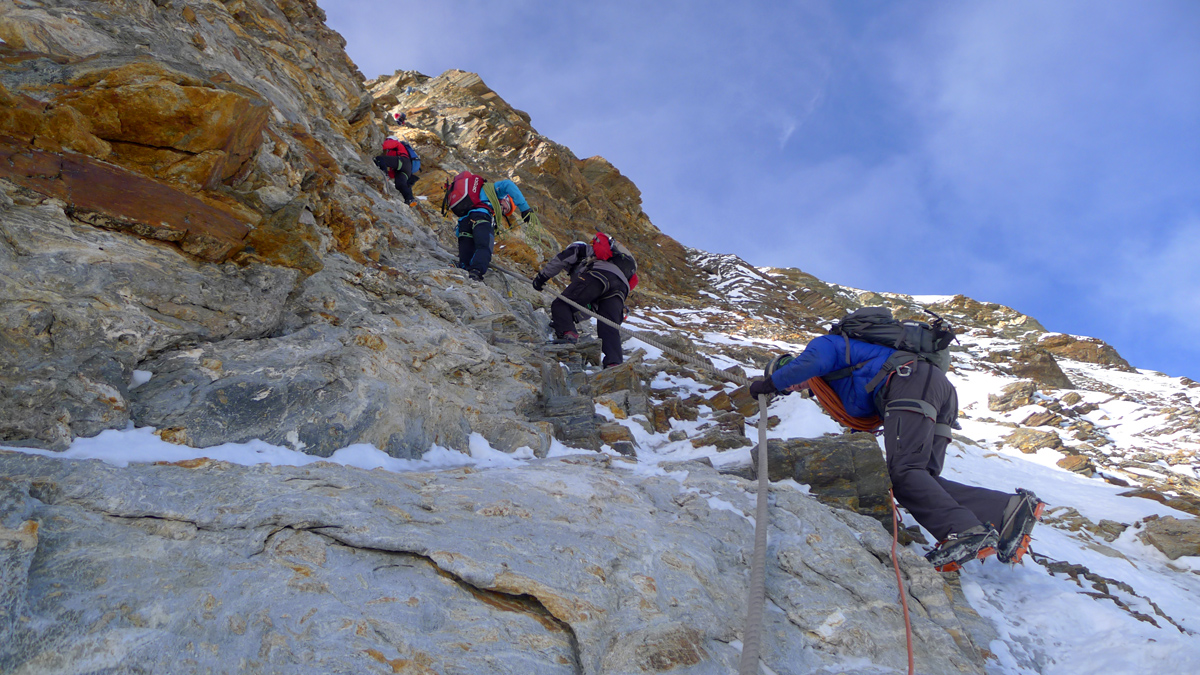
And then the madness ensues: the guided groups are beginning their descent. Its a siege from above and they ain't taking any prisoners. Standard procedure is for each guide to wrap his rope around a pole, lower the client, and then batman down a fixed line to rejoin the client. Rinse and repeat. Trying to make any upward progress using the same hardware is difficult and only possible with some level of aggressiveness. I'd usually find this type of clusterfuck shenanigans highly disturbing but right now I'm simply marvelling at the absurdity of it all and trying to imagine what it'd be like with the typical crowds of a nice summer weekend, in deteriorating weather, or both. Besides, these guides have installed and maintain all of this fixed hardwear so monopolizing it to do their job seems fare to me. We squeeze in bursts from anchor to anchor when we dare but its mostly best to just hang on and let the hurricane through. The climbing is difficult in places and I am thanking P90X for the upper body strength that is allowing me to be comfortable hauling myself up the steep fixed lines with only a marginal belay. This would not be nearly as easy or secure with my body of 4 years ago.
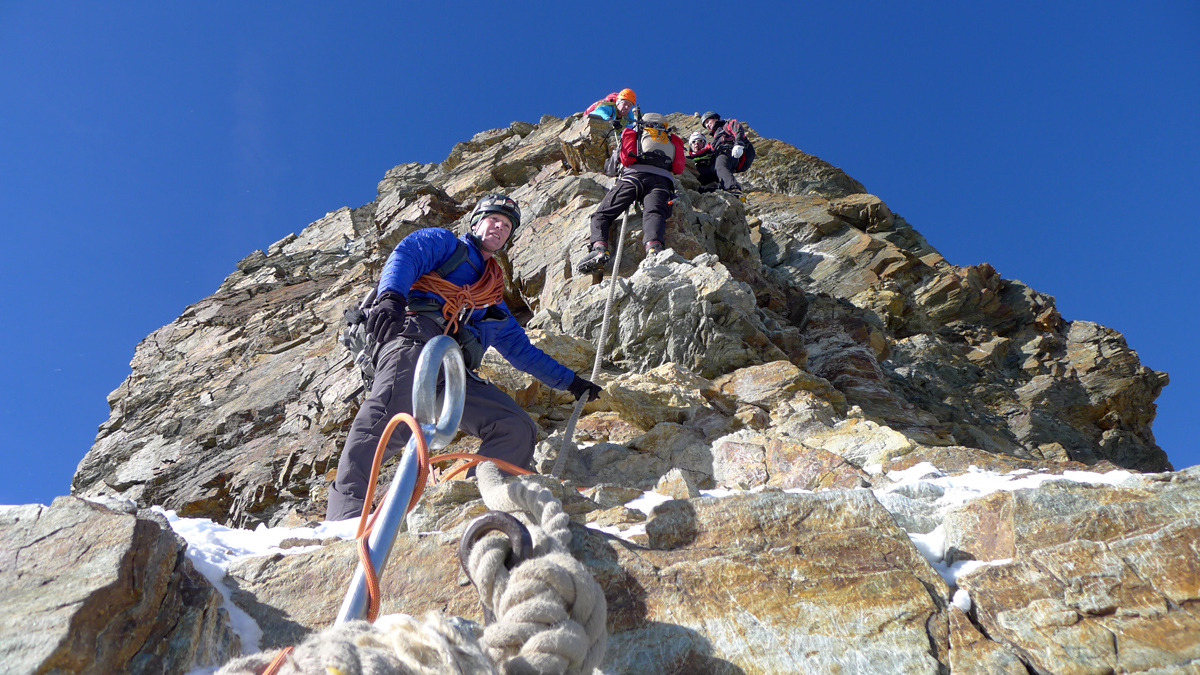
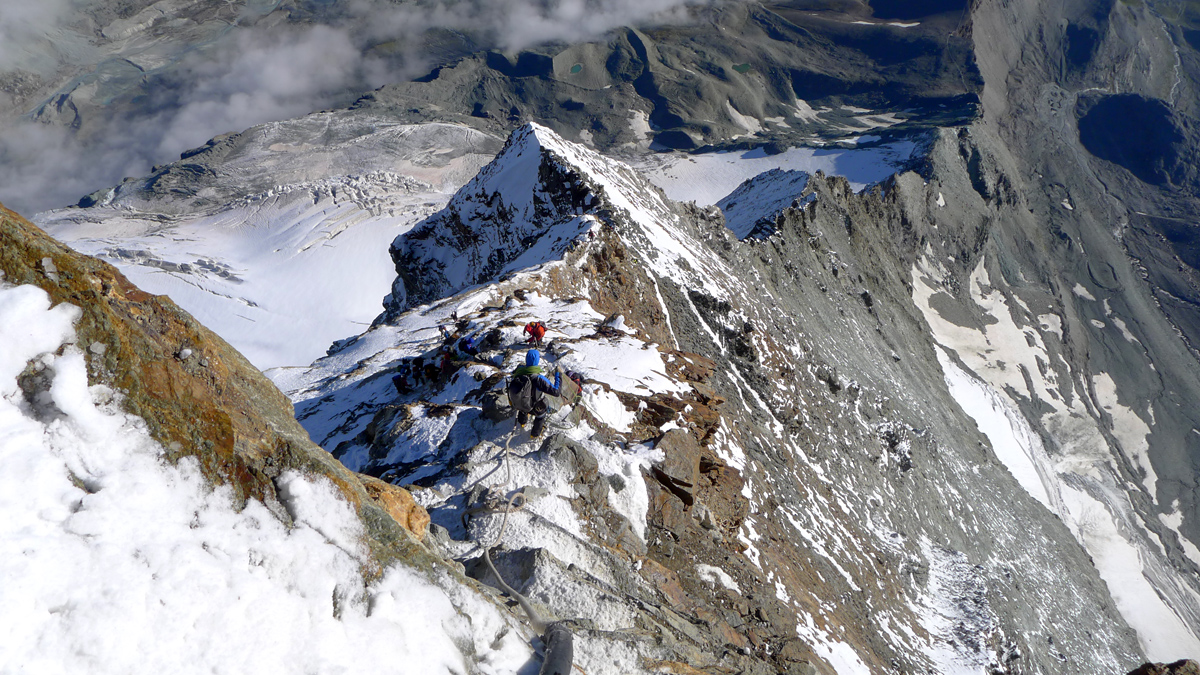
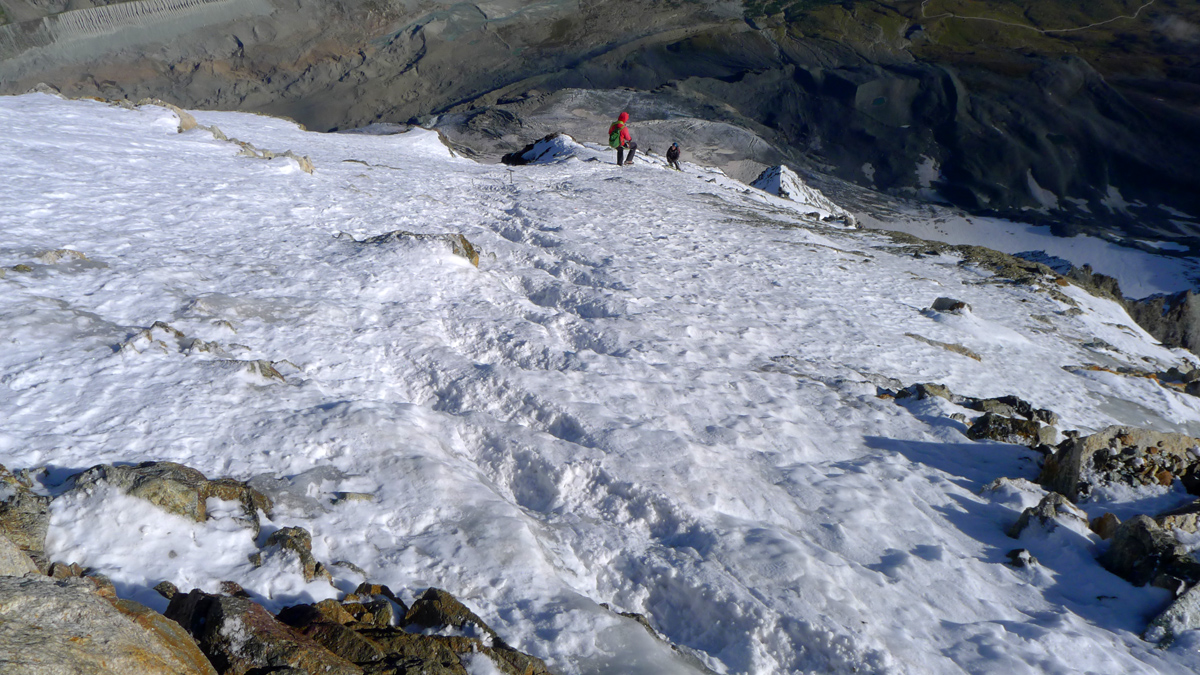
After a 15-20 minute assault us unguided climbers are left in peace and soon steep rock gives way to the final icy summit snowfield which we follow to the narrow summit ridge.
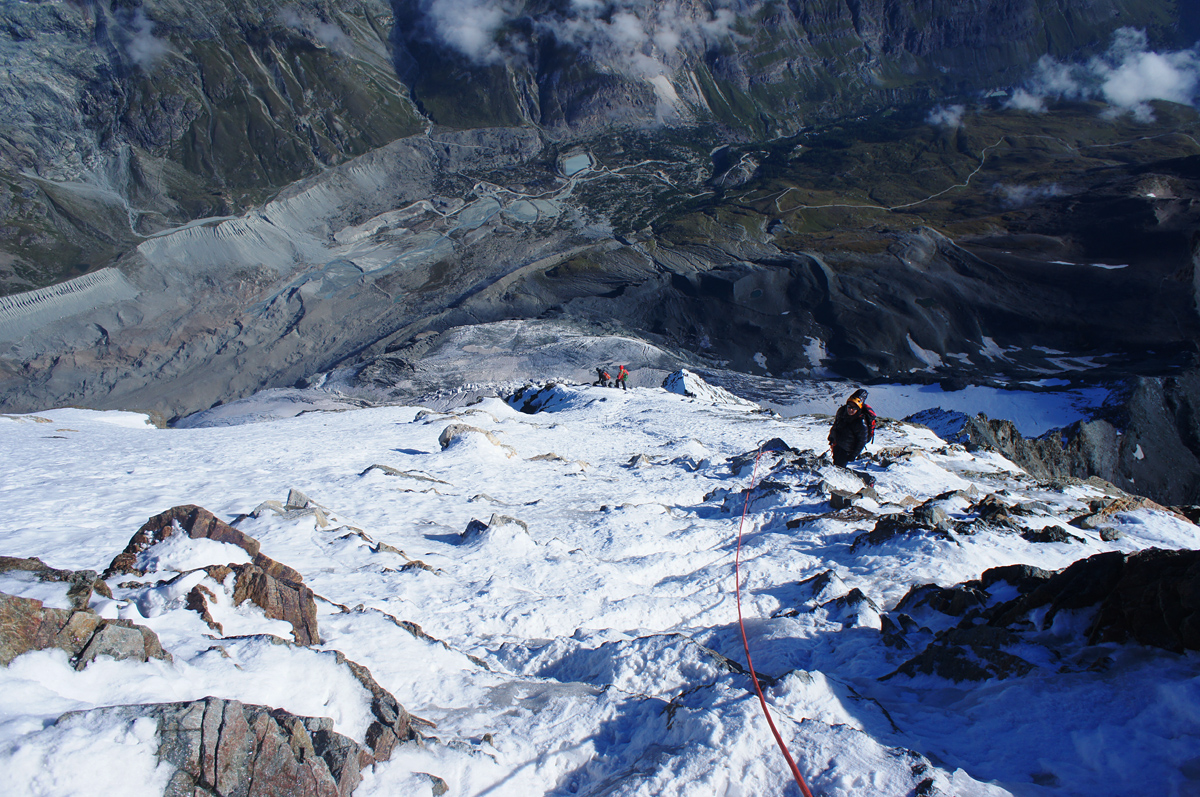
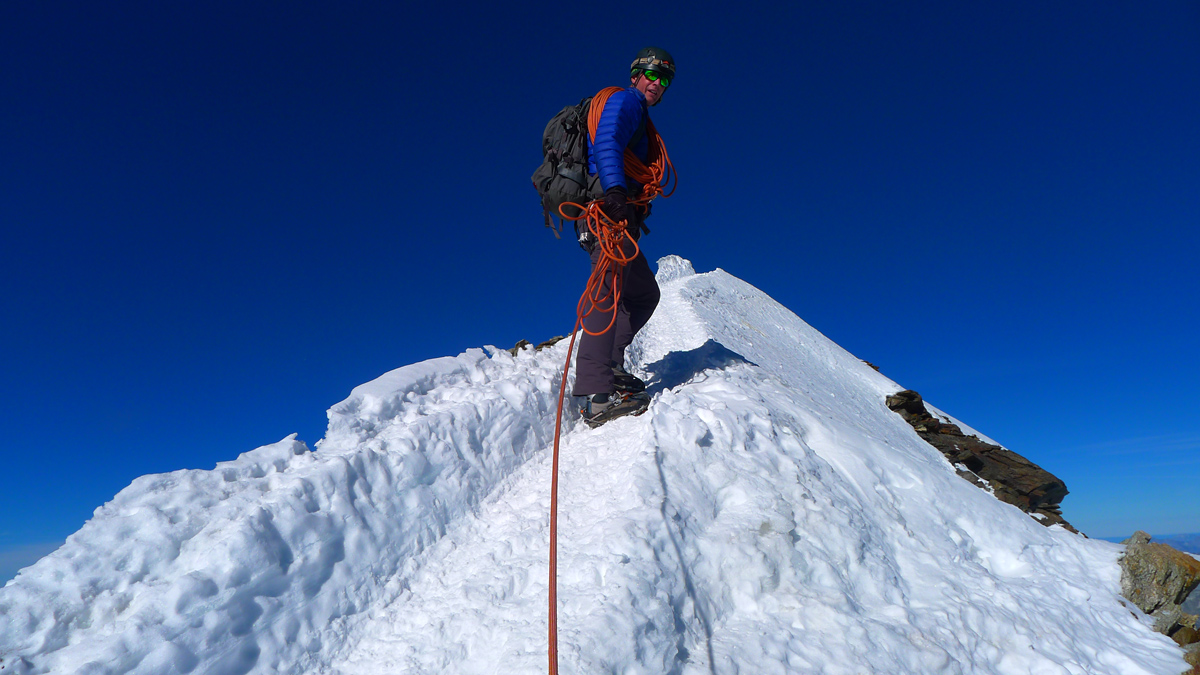
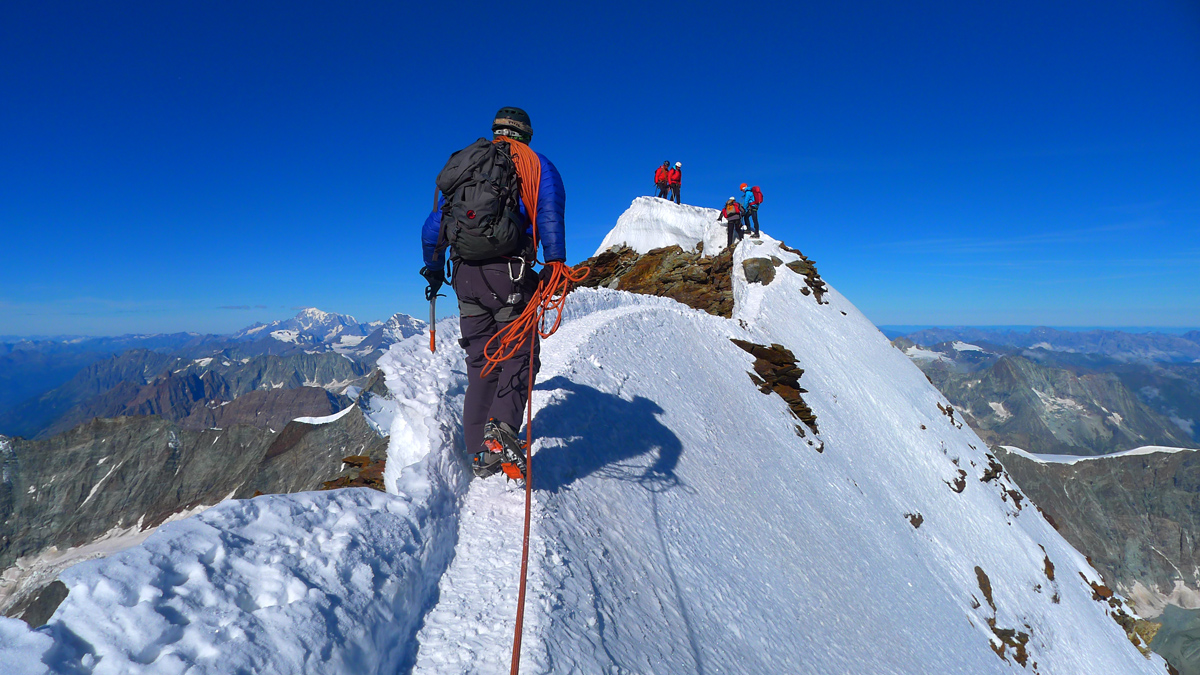
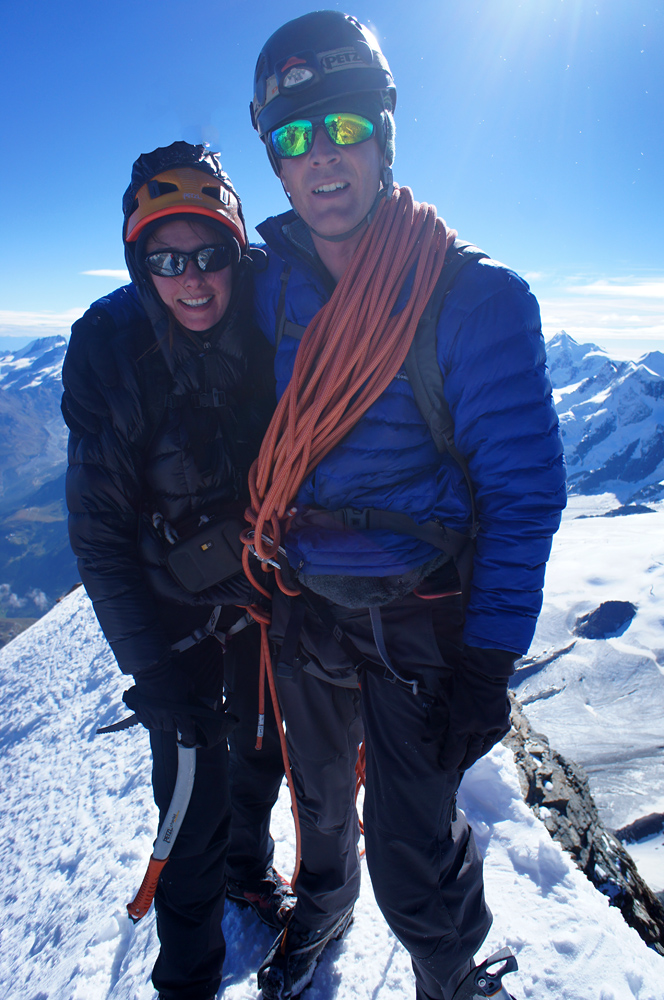
The summit comes in a rather anticlimactic fashion and an chilly breeze makes it a rather uncomfortable place to be. We exchange cameras with the party ahead of us for summit photos and then take cover in a windshadow to scarf down some chocolate. A few minutes later Alex and Werner appear and we spend a few minutes chatting and exchanging congratulations.
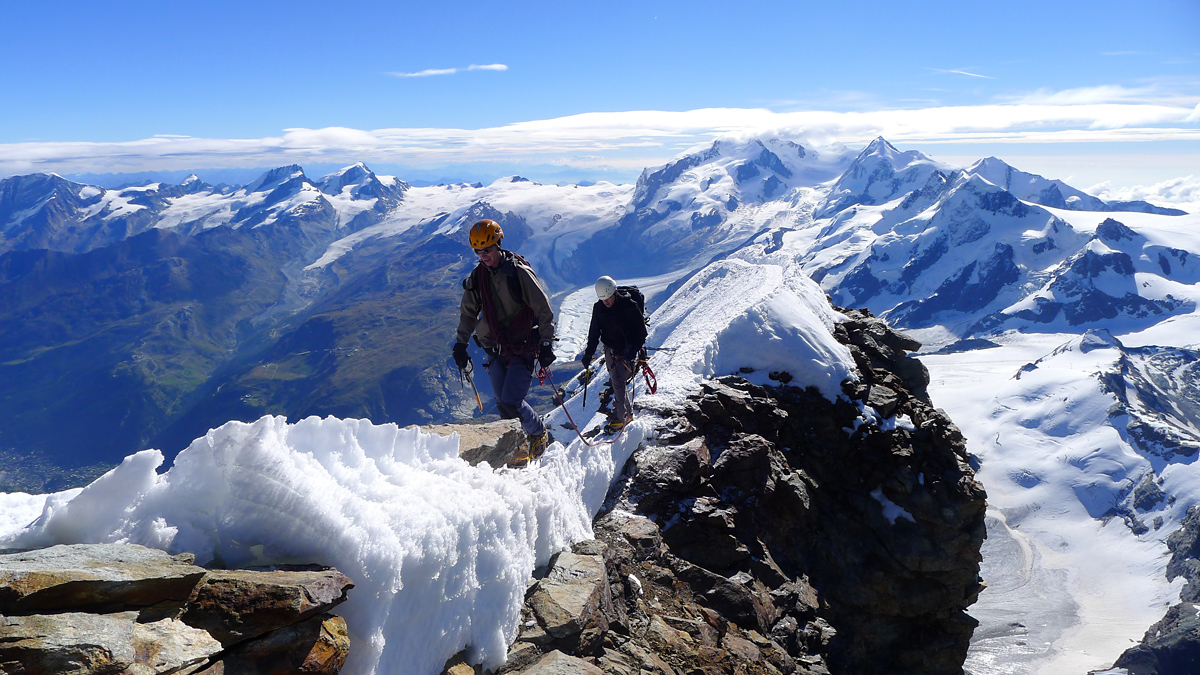
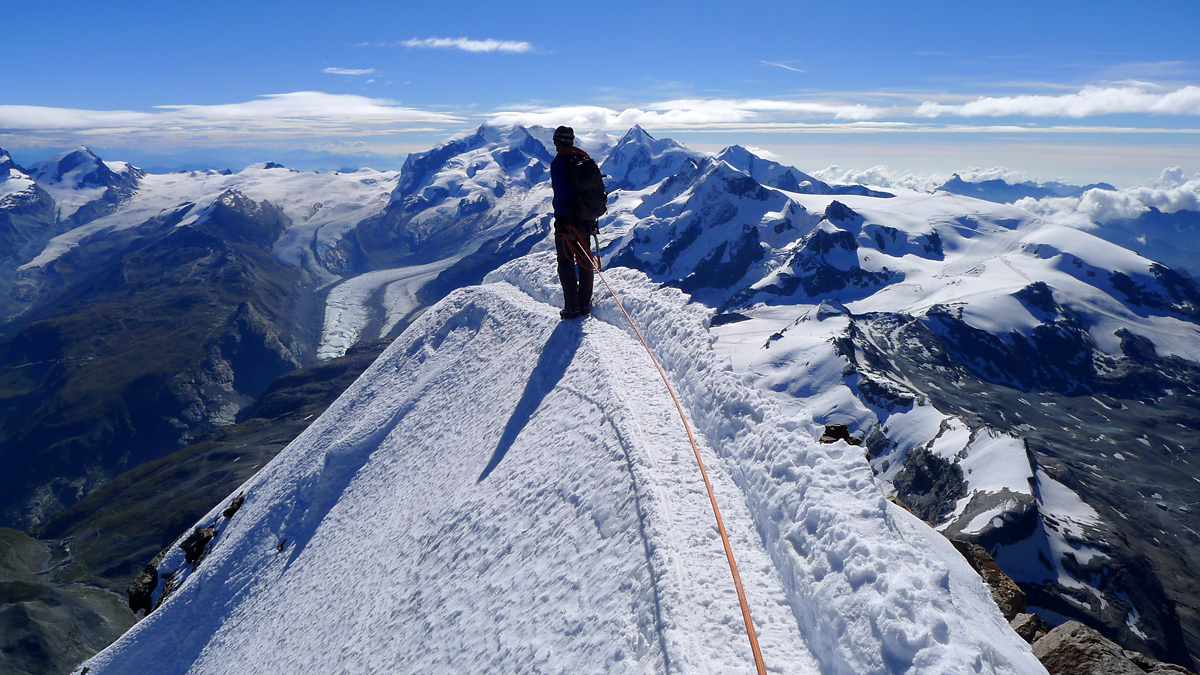
Faced with the descent of 4,000 vertical feet of technical terrain we waste no more time revelling in victory. We do two full rope length rappels down the steepest portion of rock and fixed lines below the summit snowfield and one more down the upper Mosely Slab. From there we unrope and continue the never ending scramble back to the Hörnli Hut.
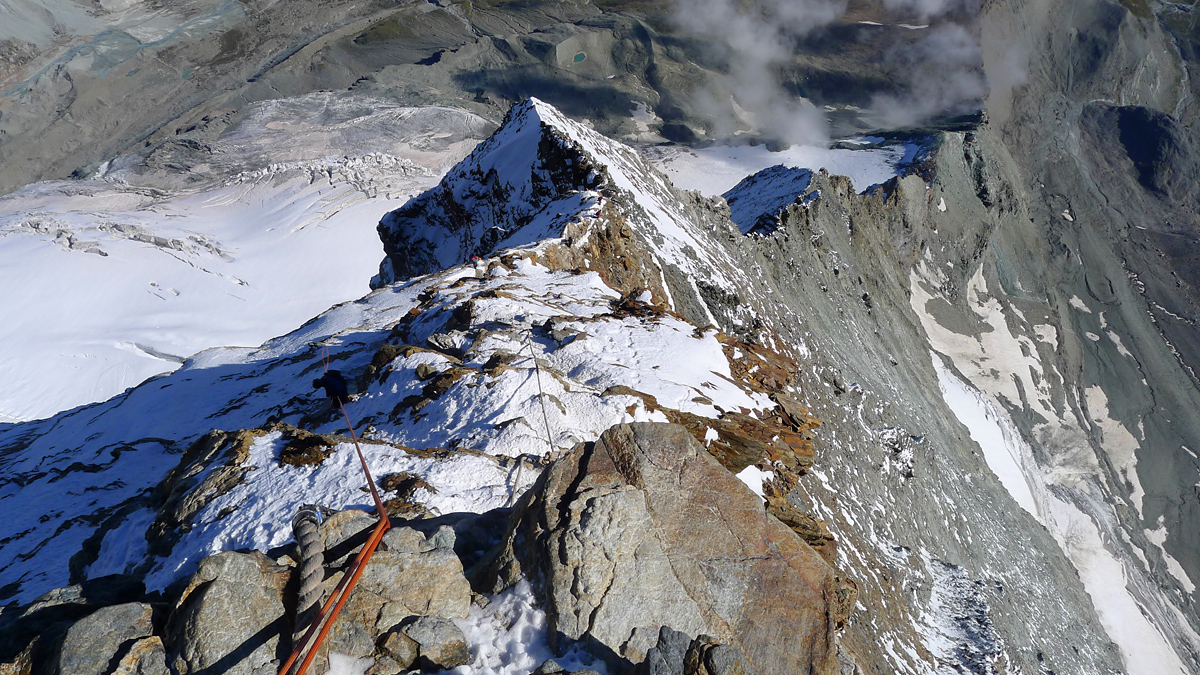
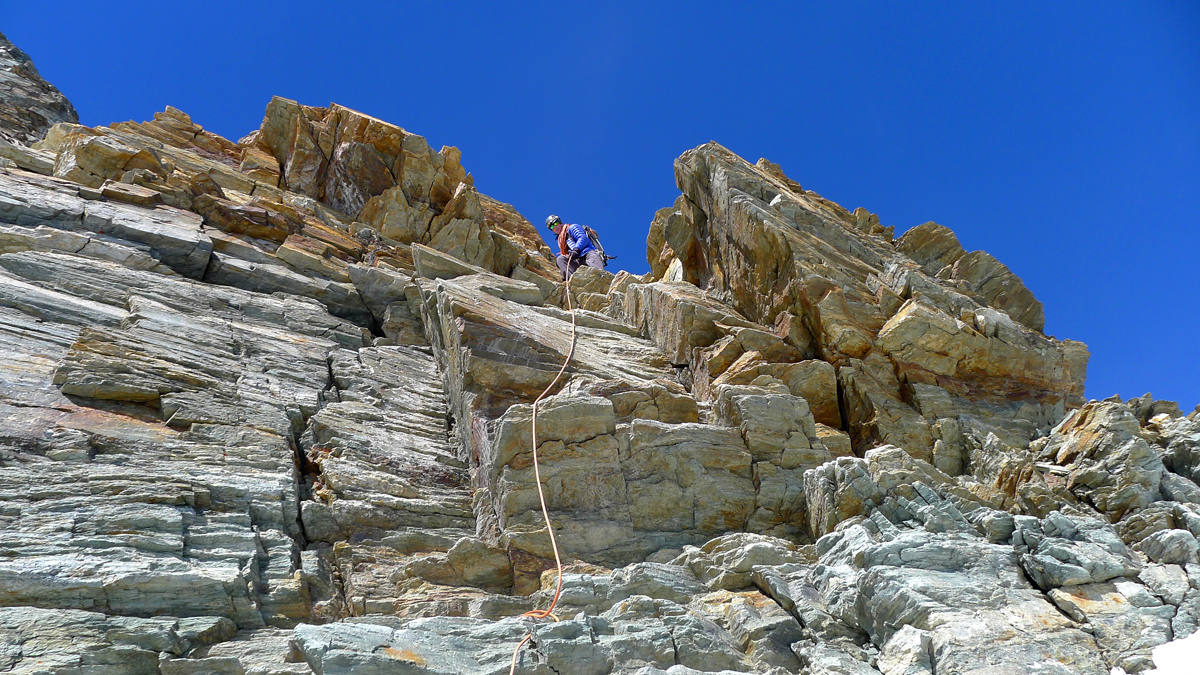
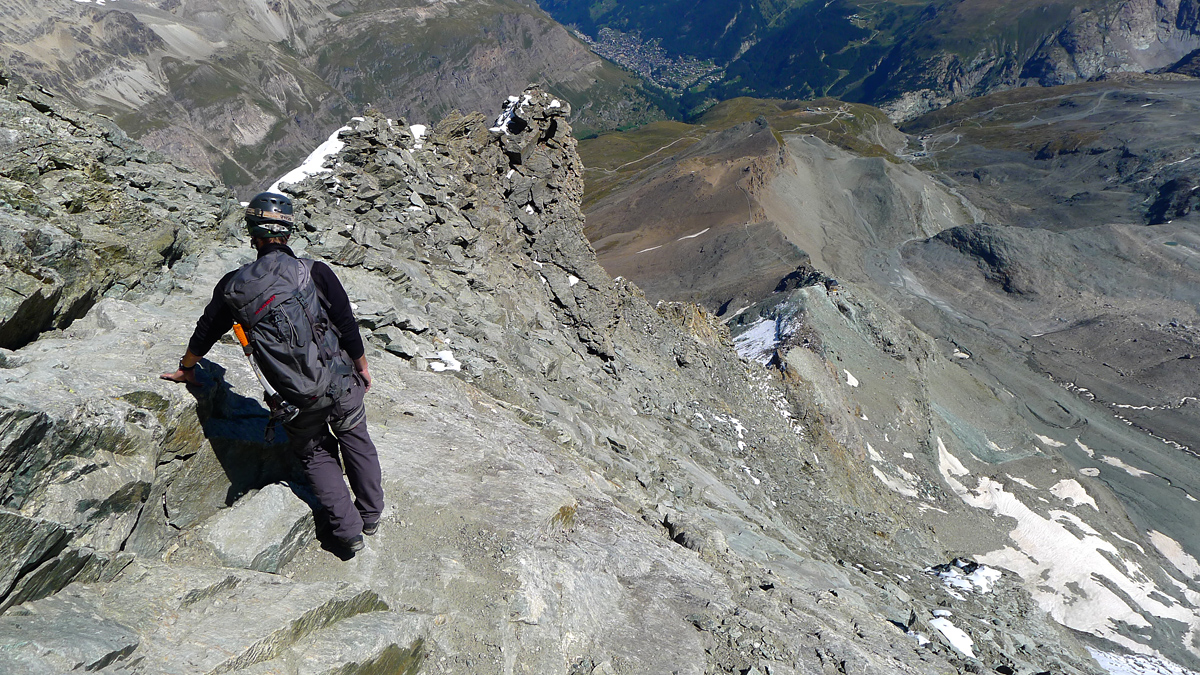
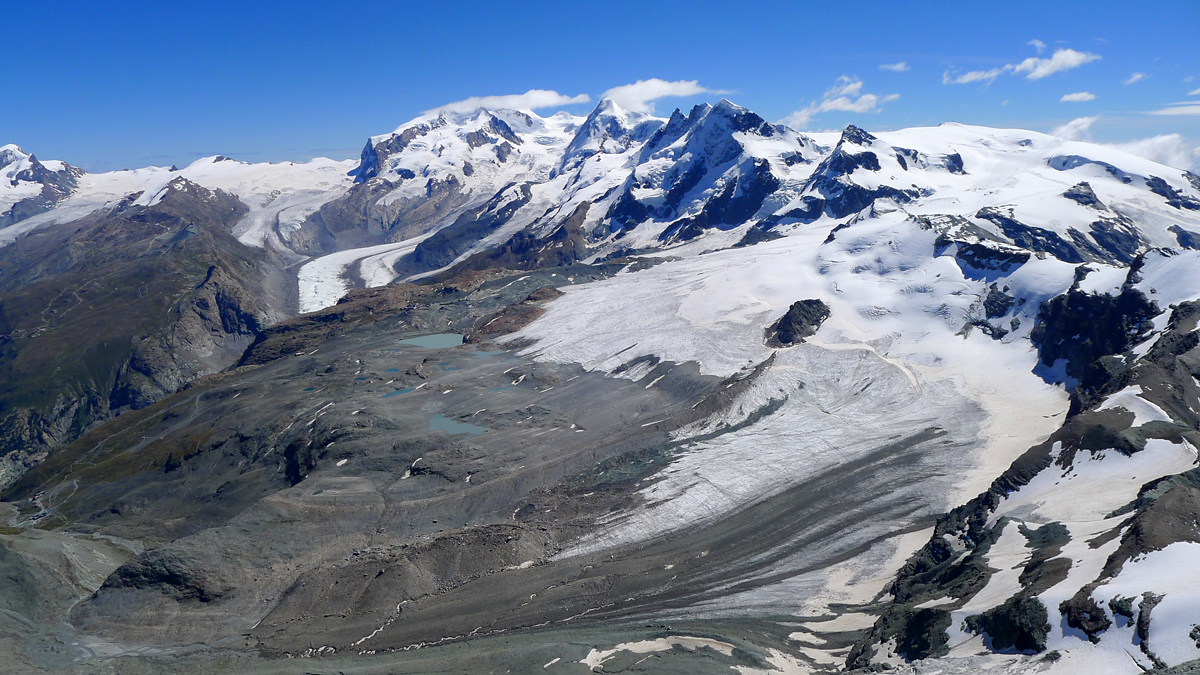
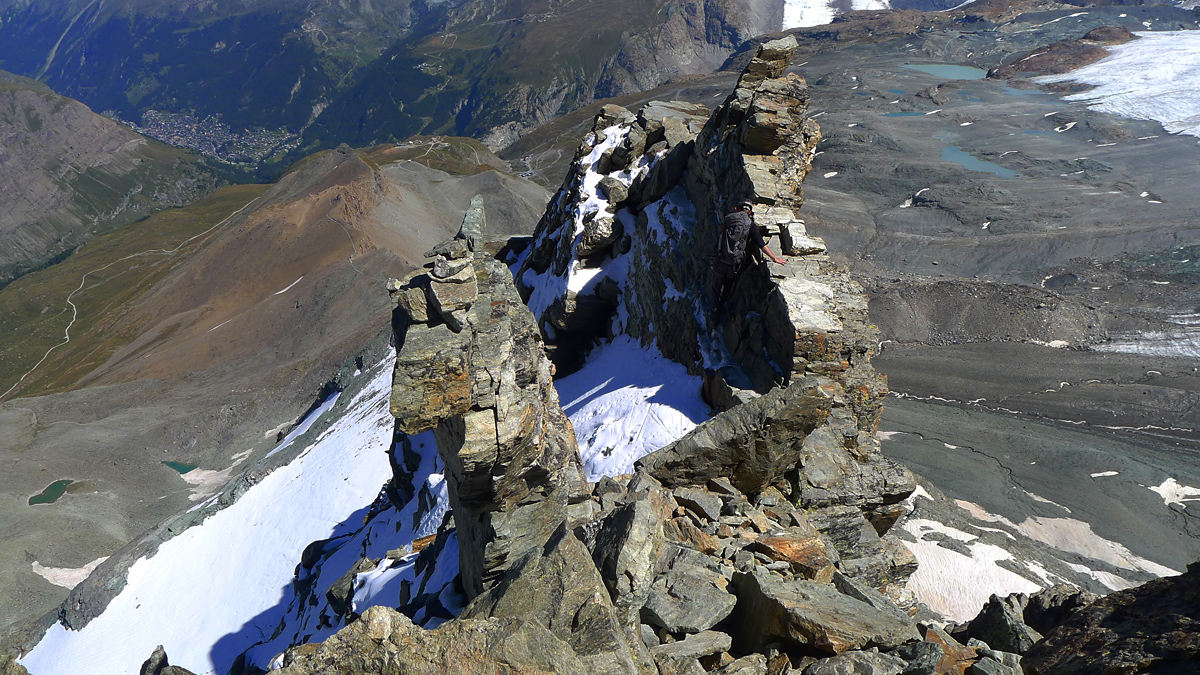
Roundtrip from the hut the routes takes us five hours up and four hours down. We can't resist drinking a tall boy out on the deck afterwards, dawdle a bit too long, and then resort to a light jog down to catch the lift to town before it stops running. Back in Zermatt its off to the Youth Hostel in hopes of finding cheap accommodation for the night.